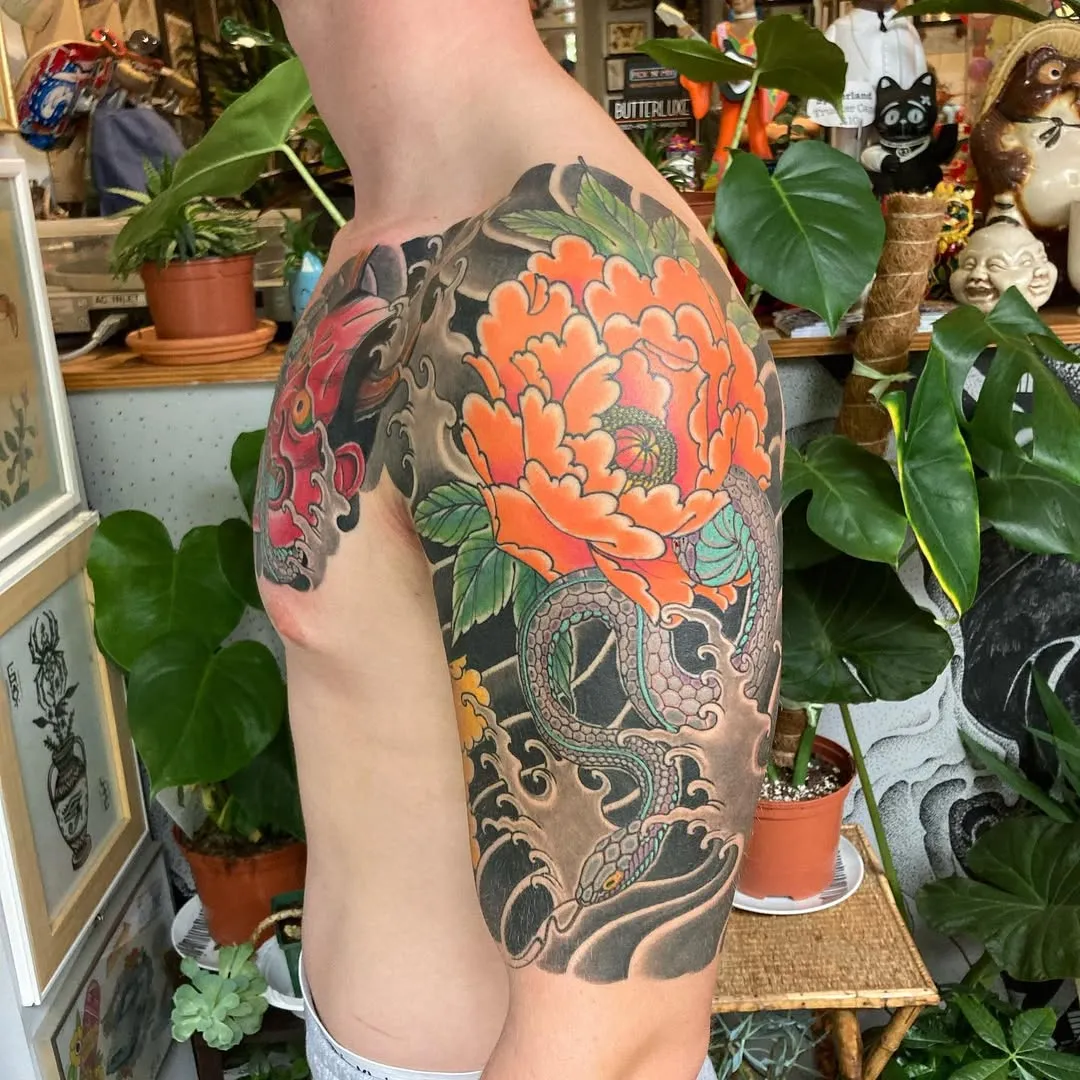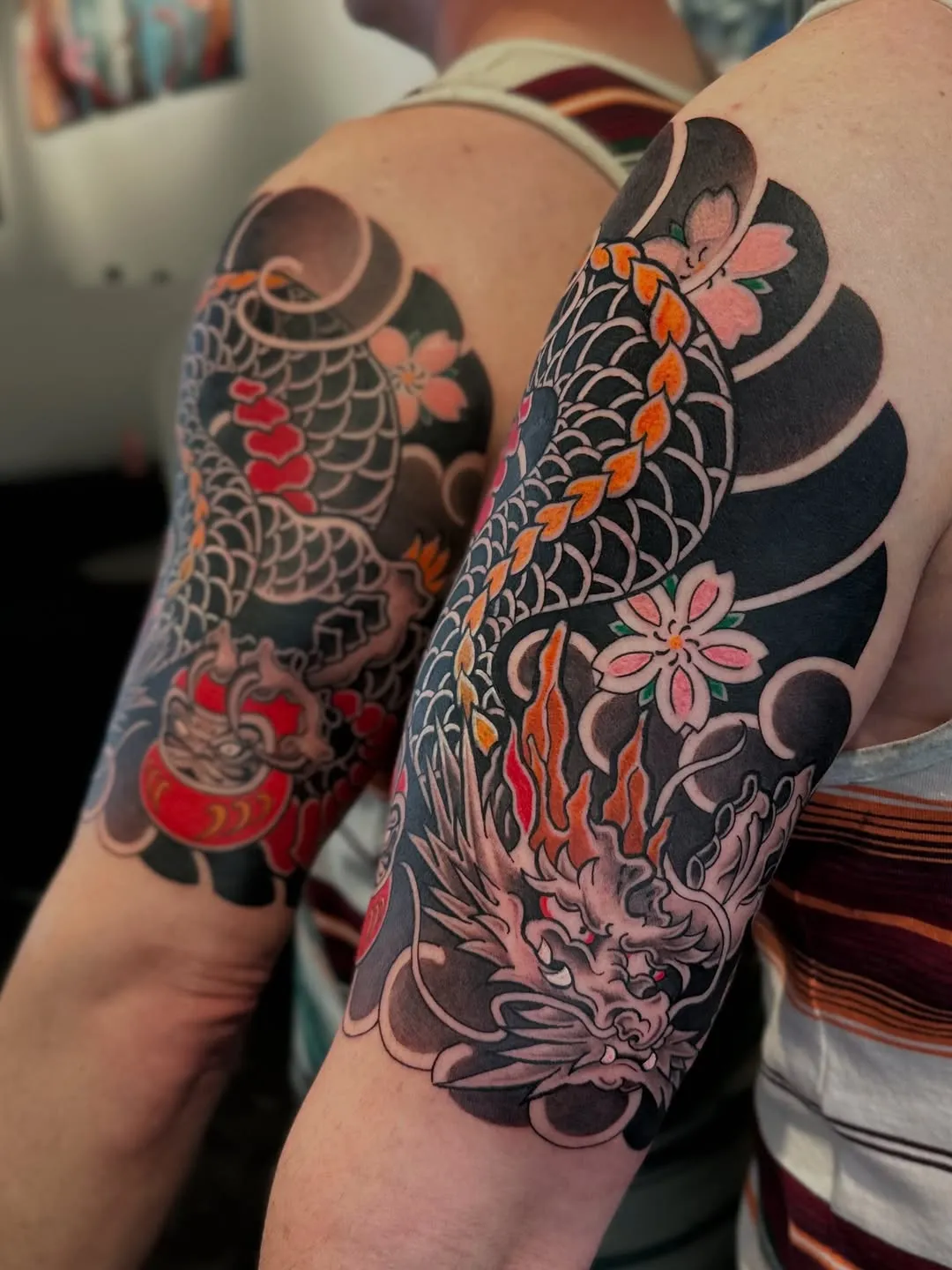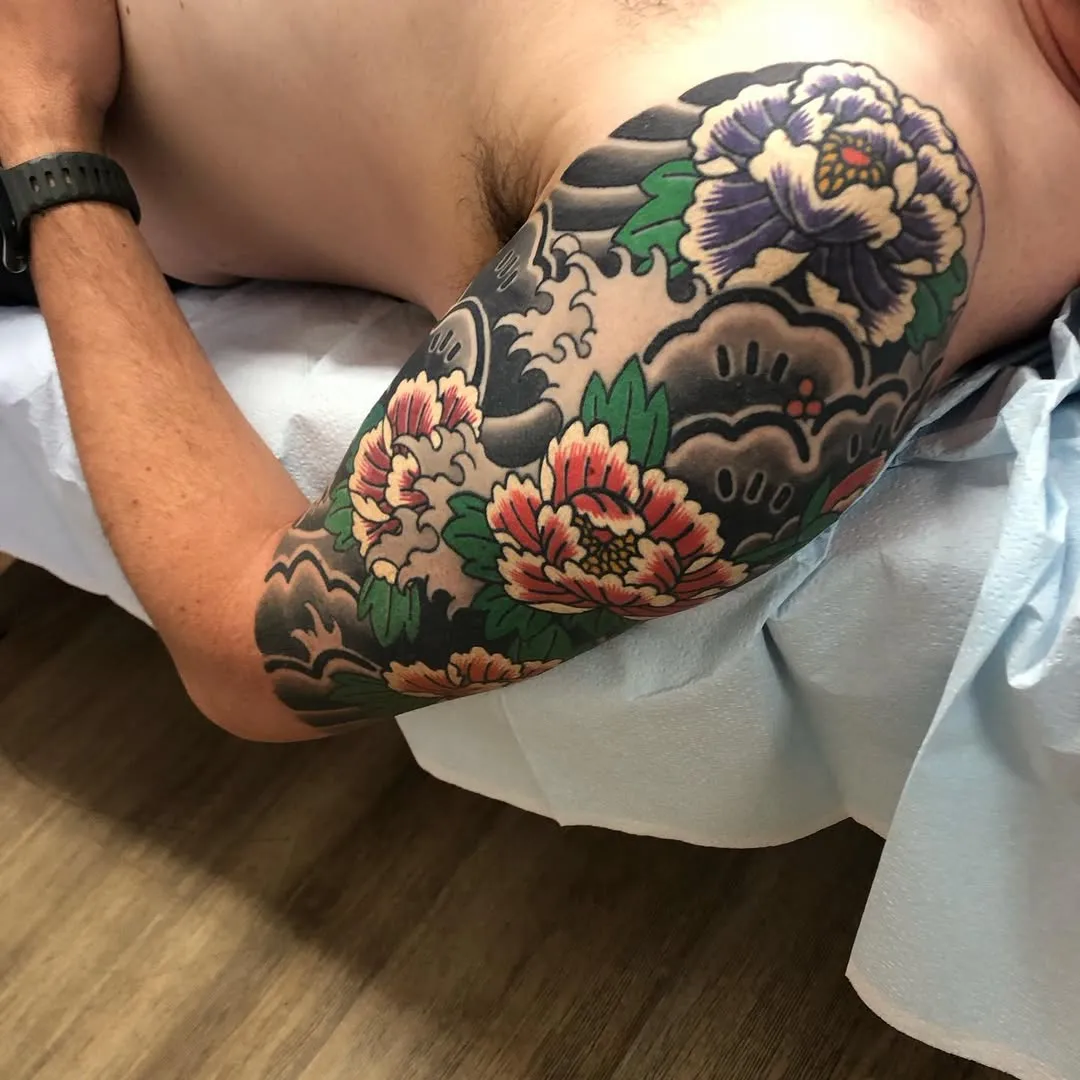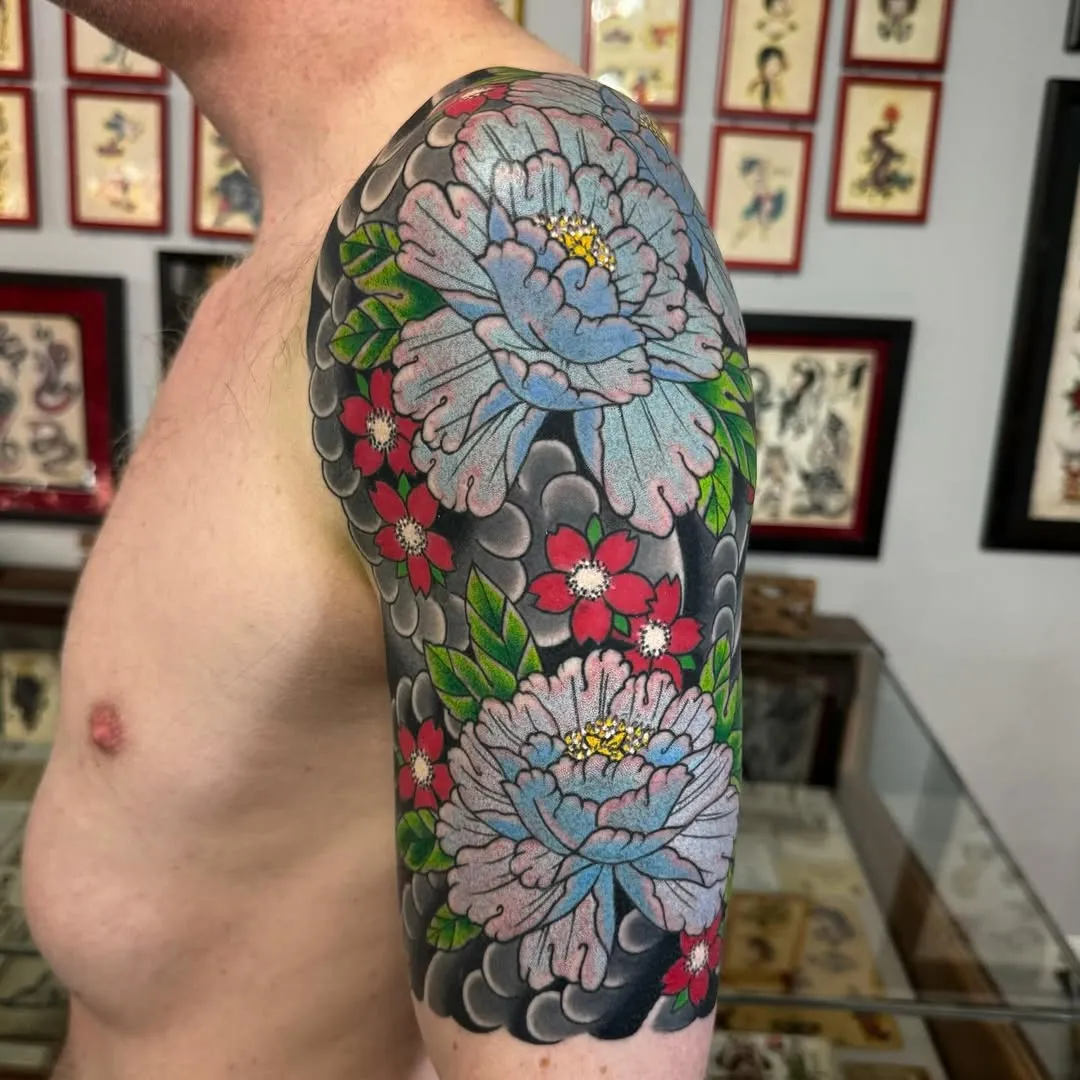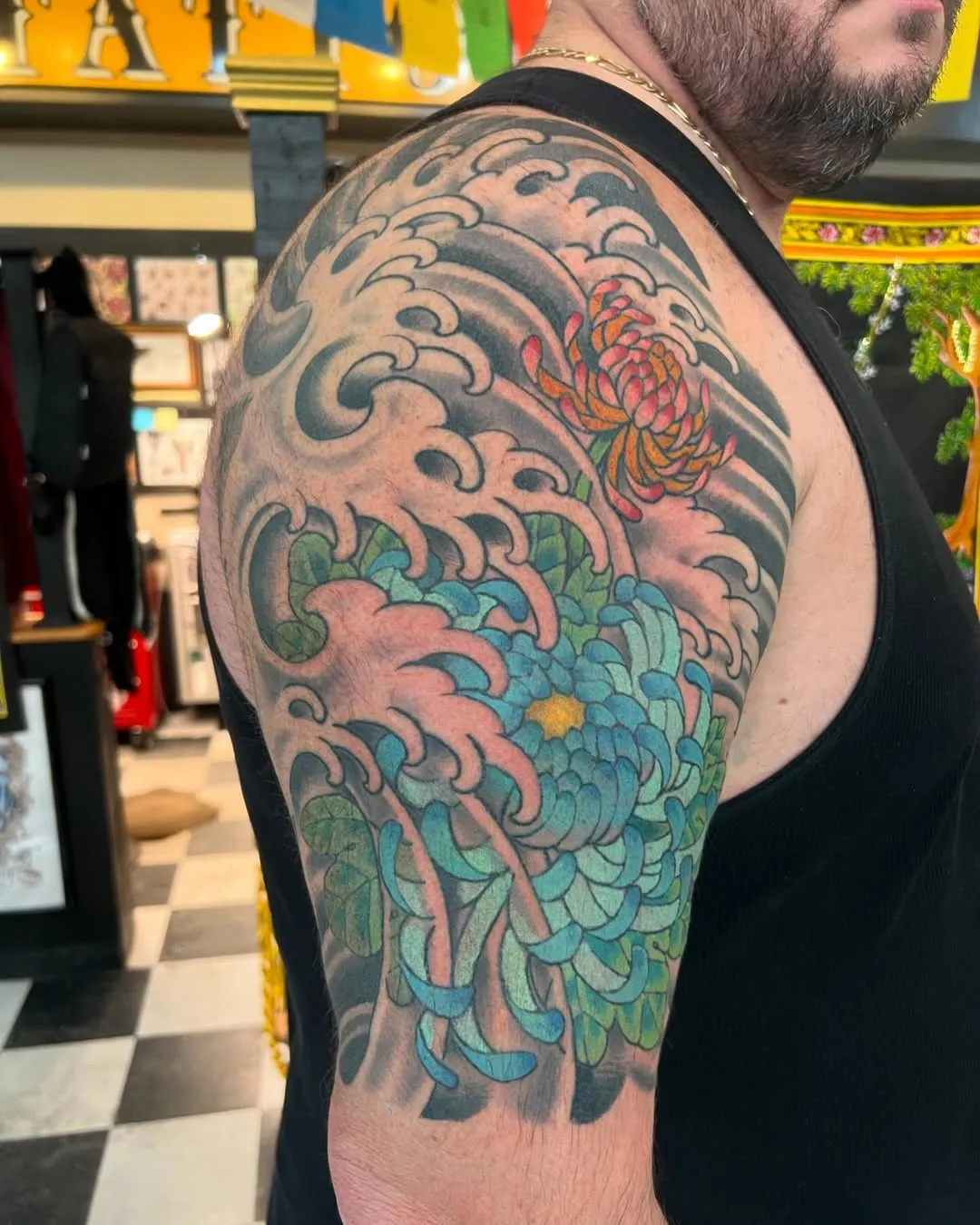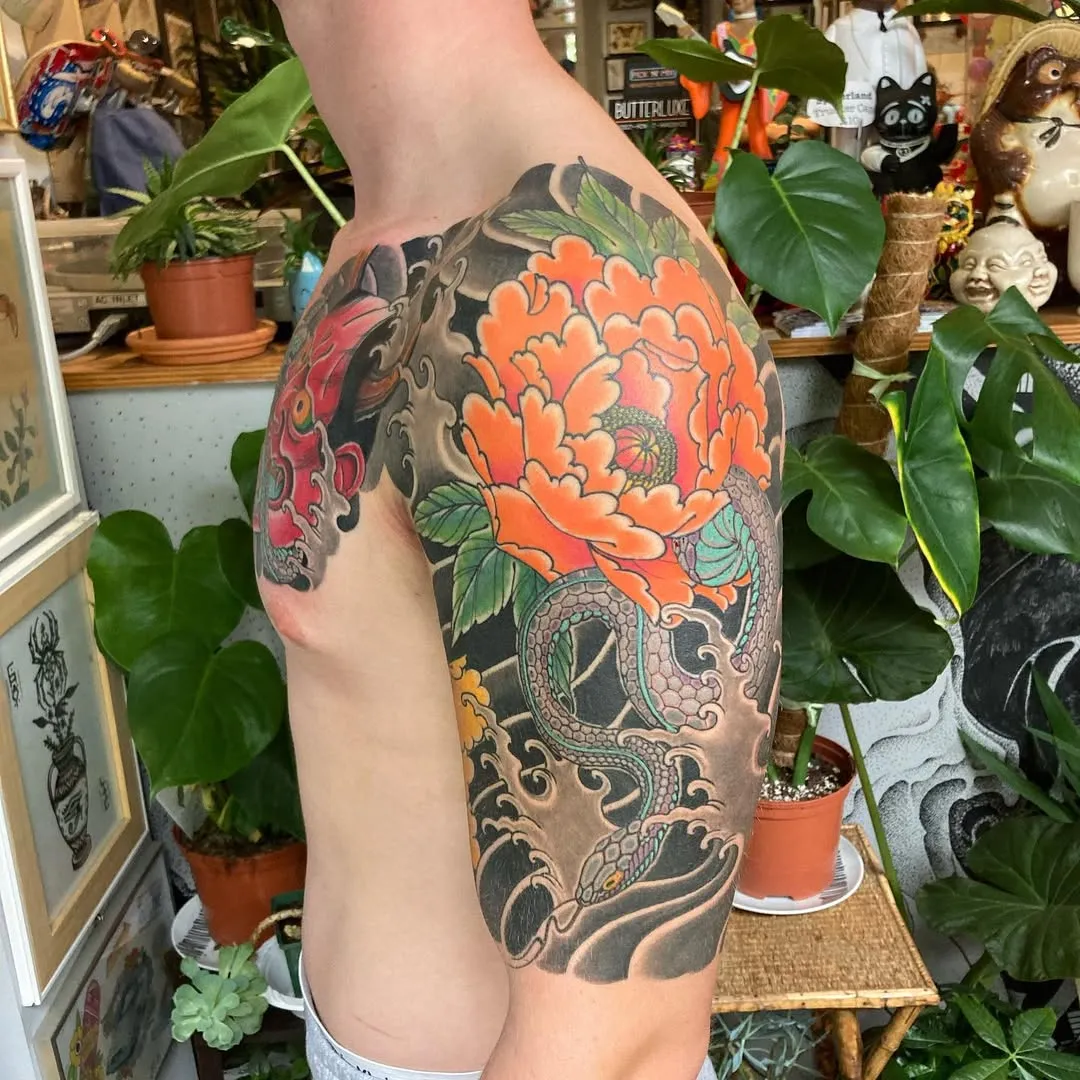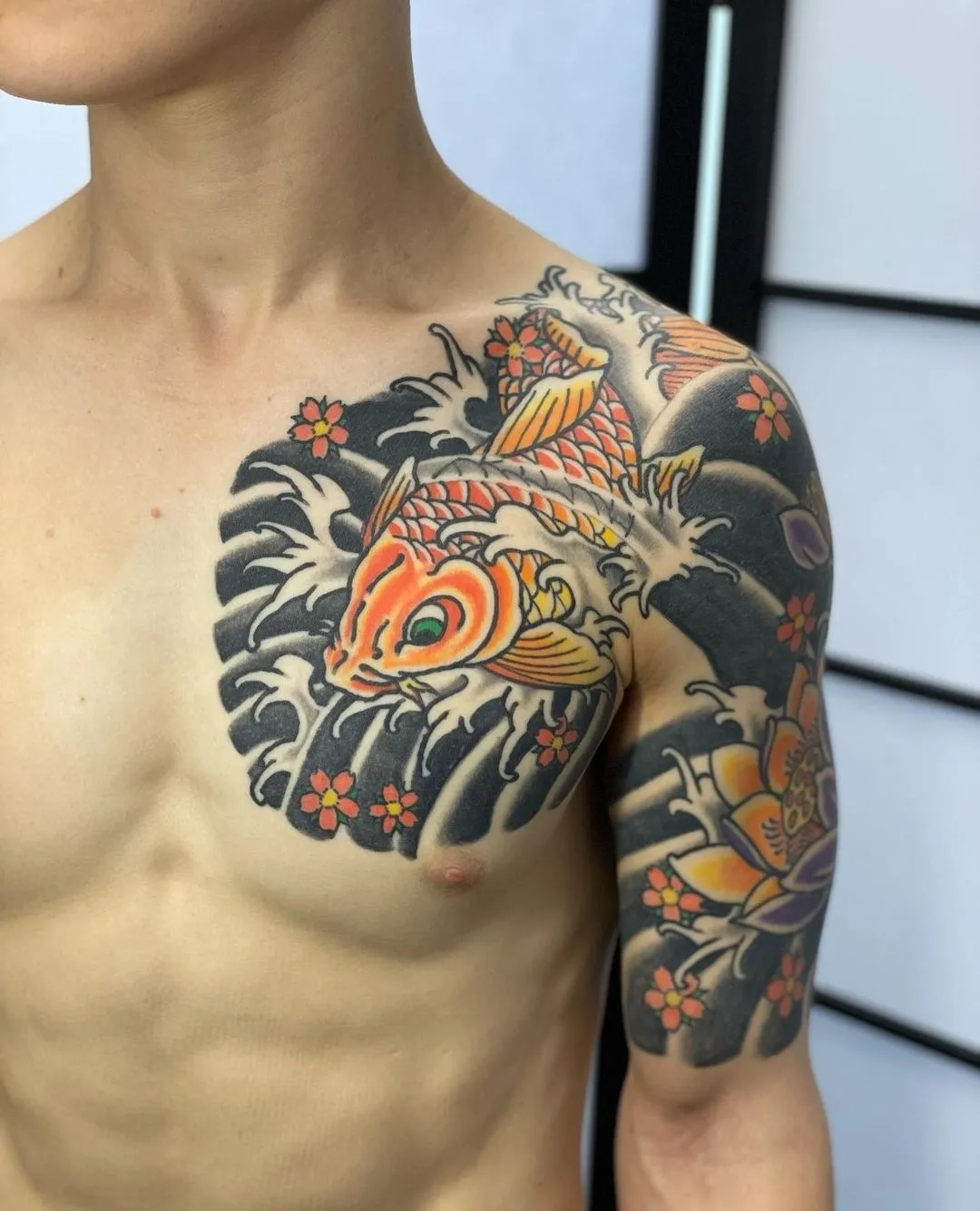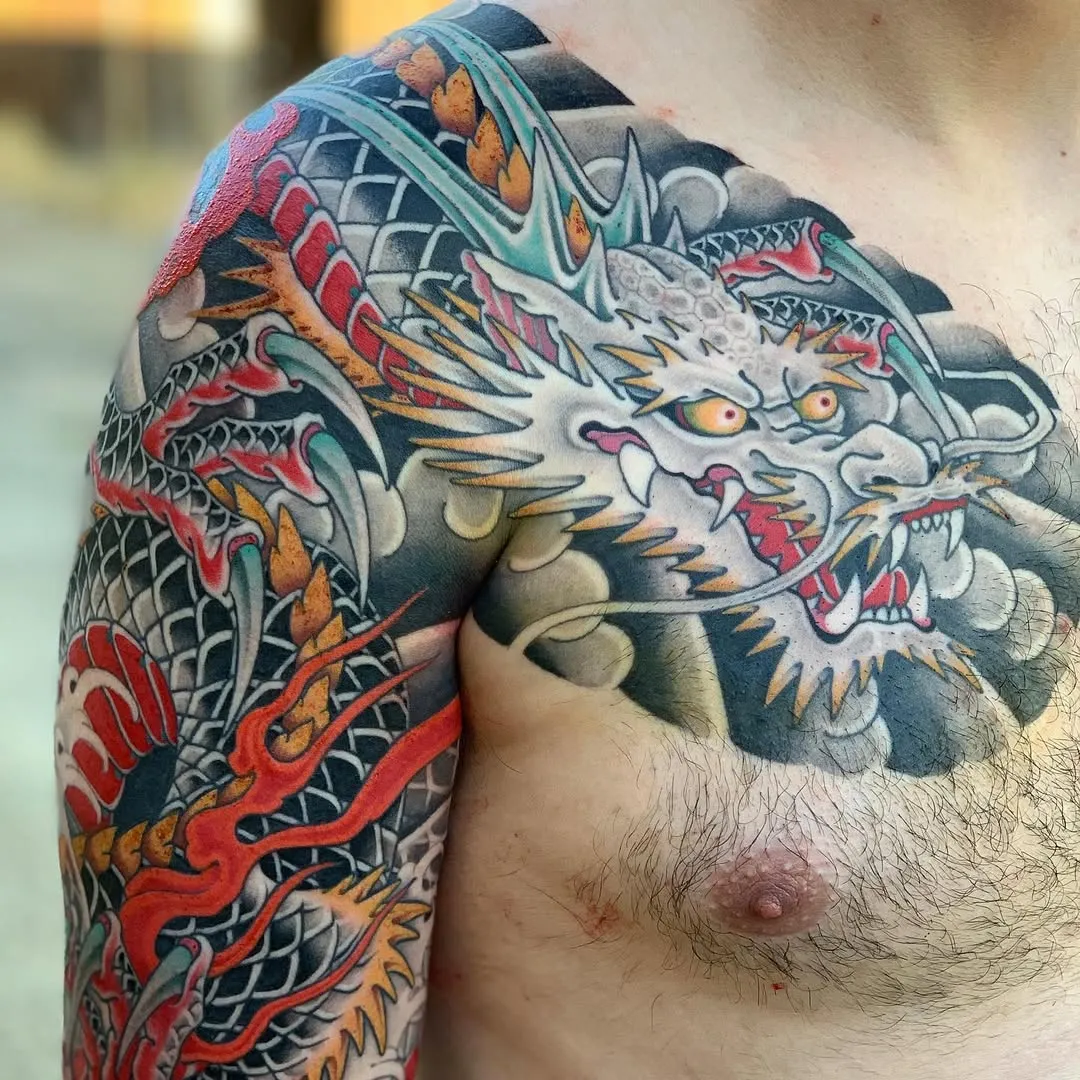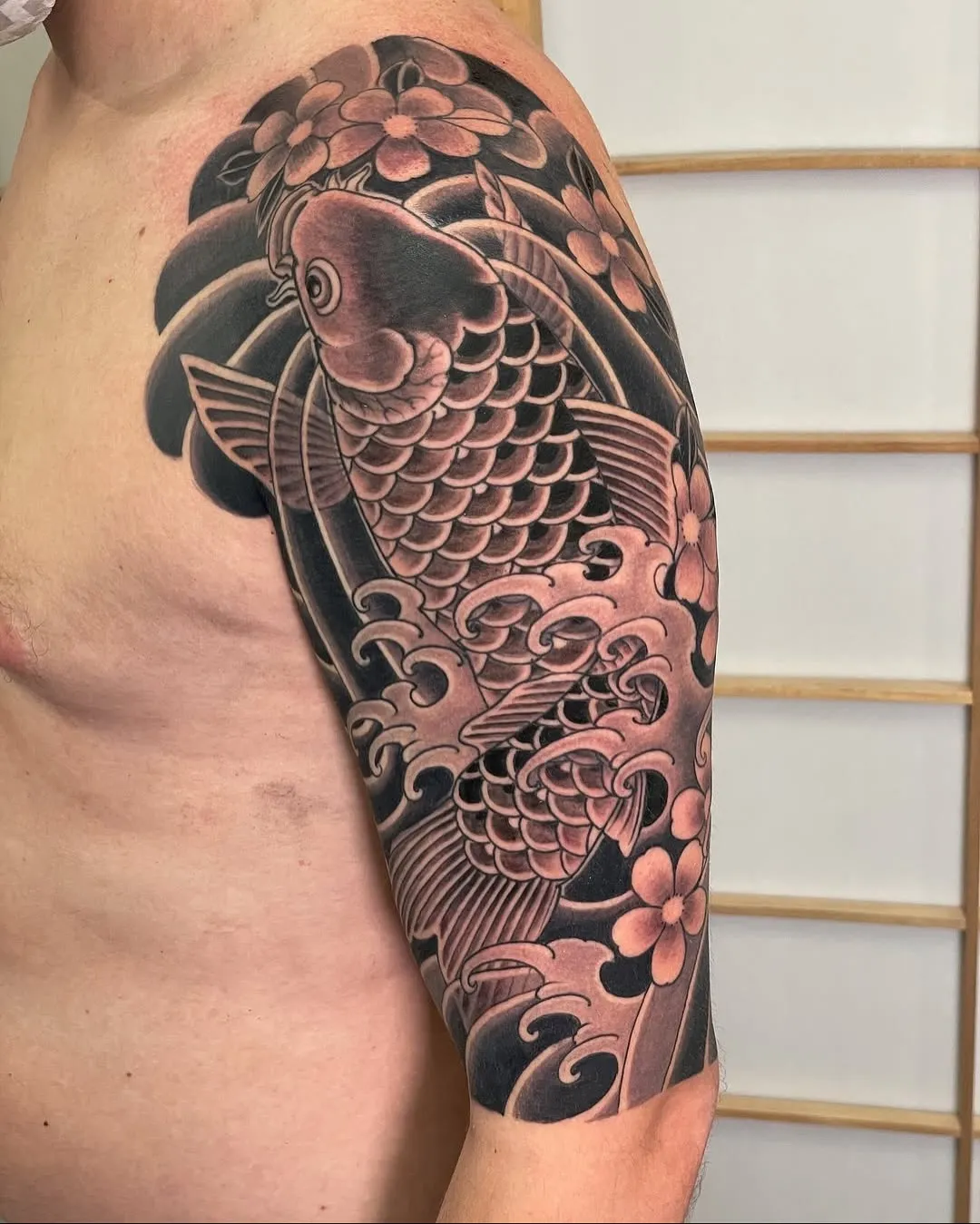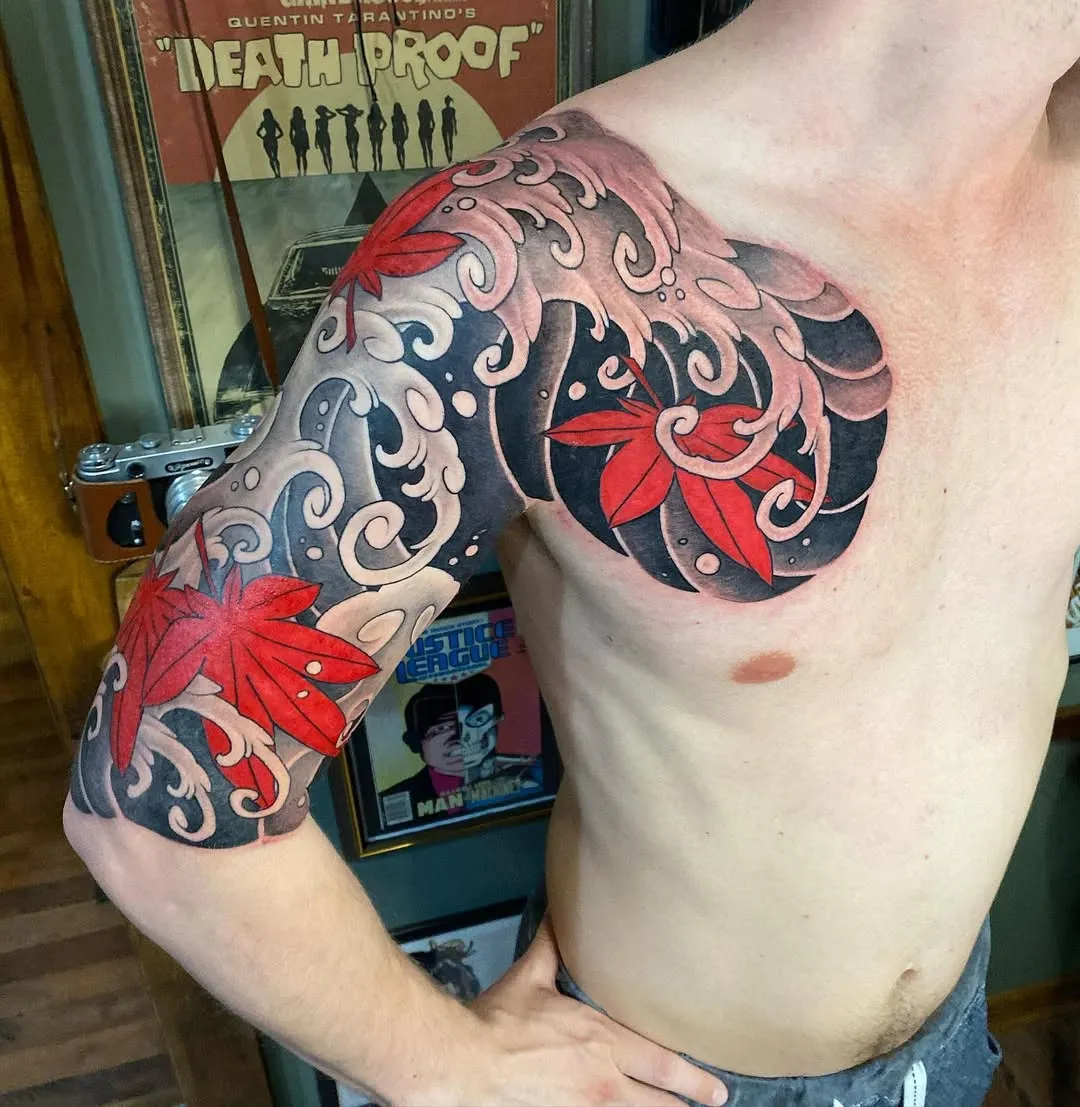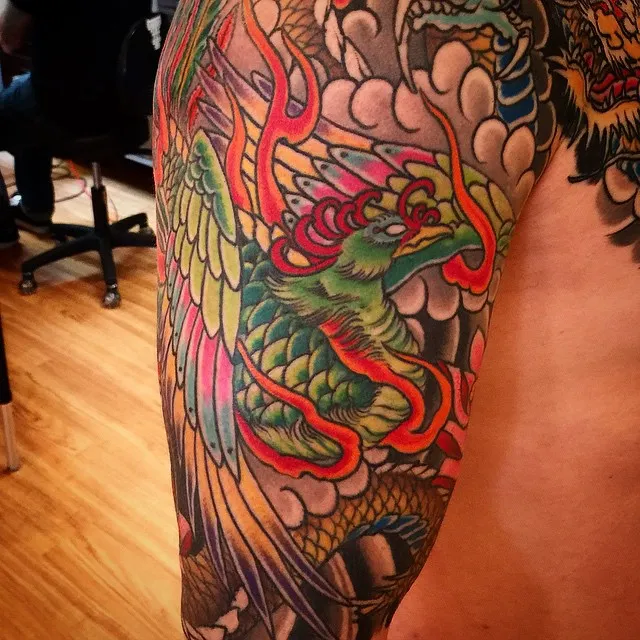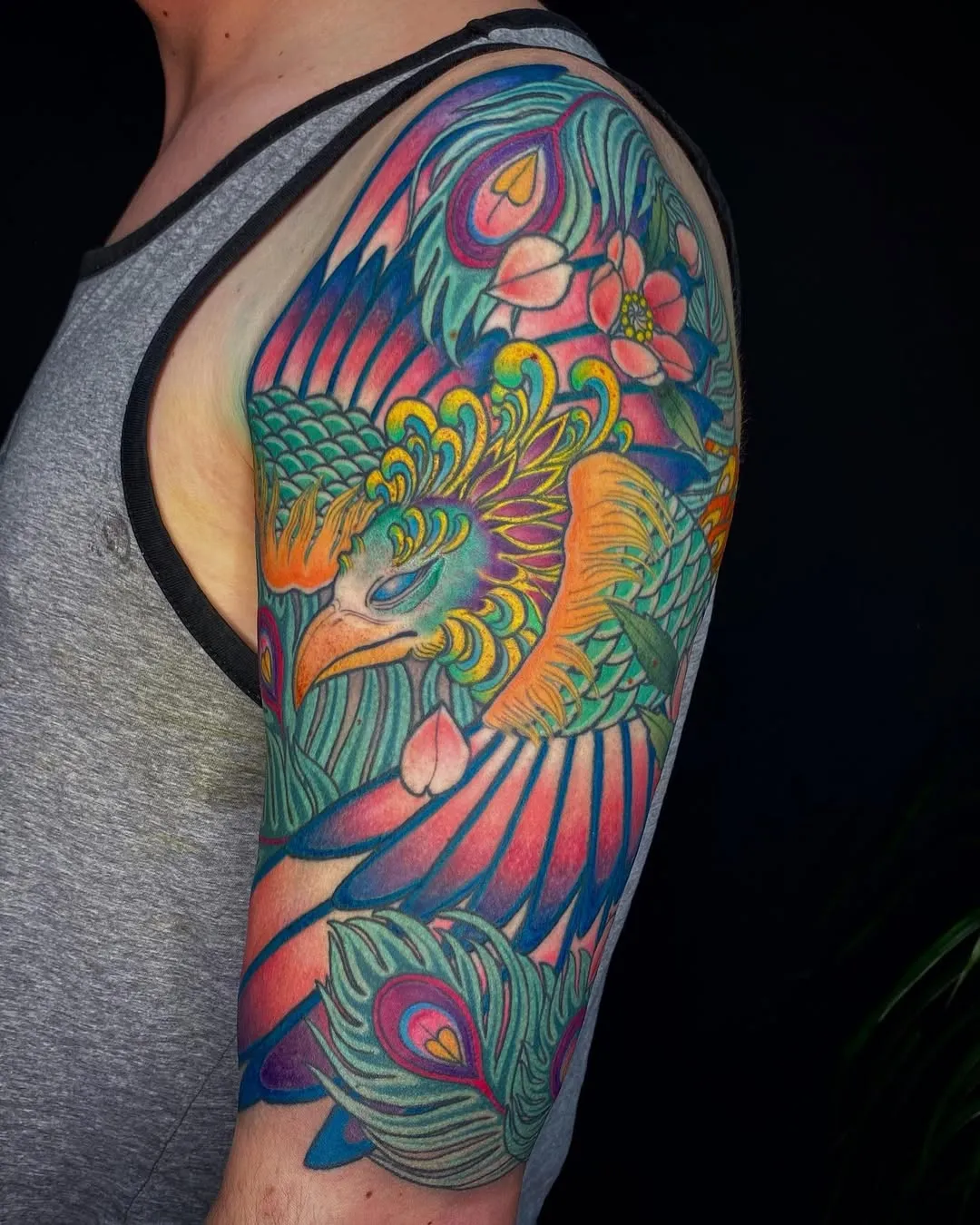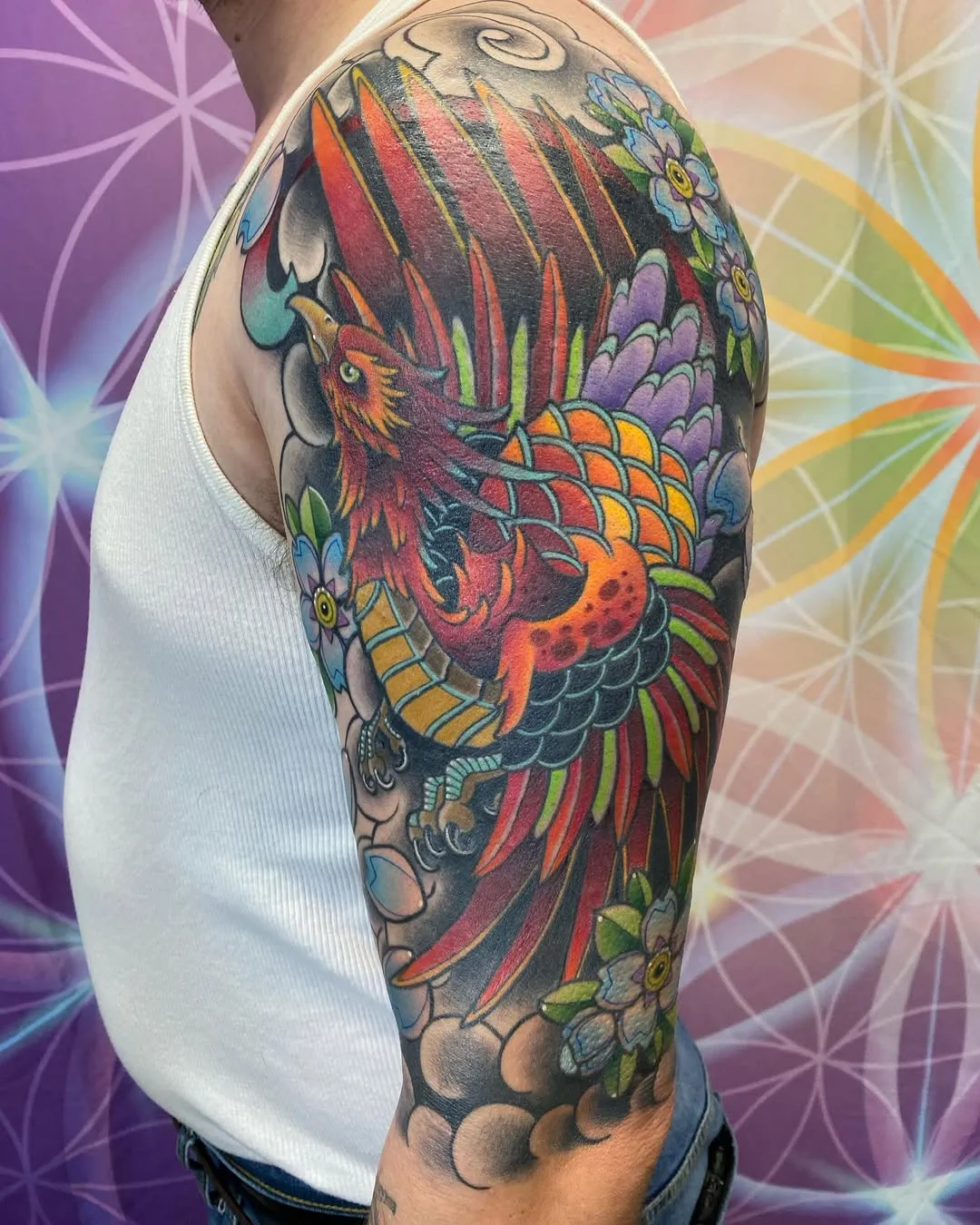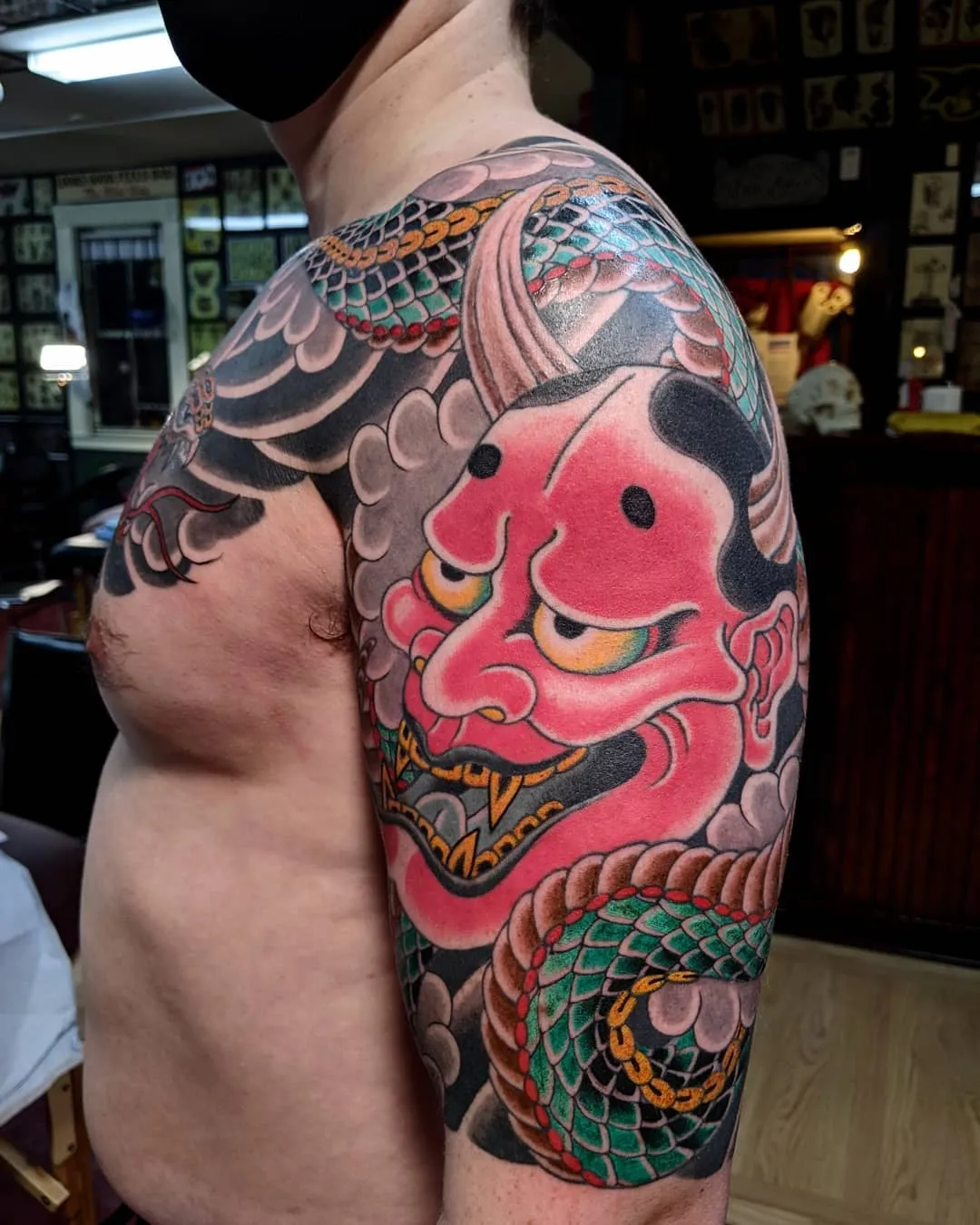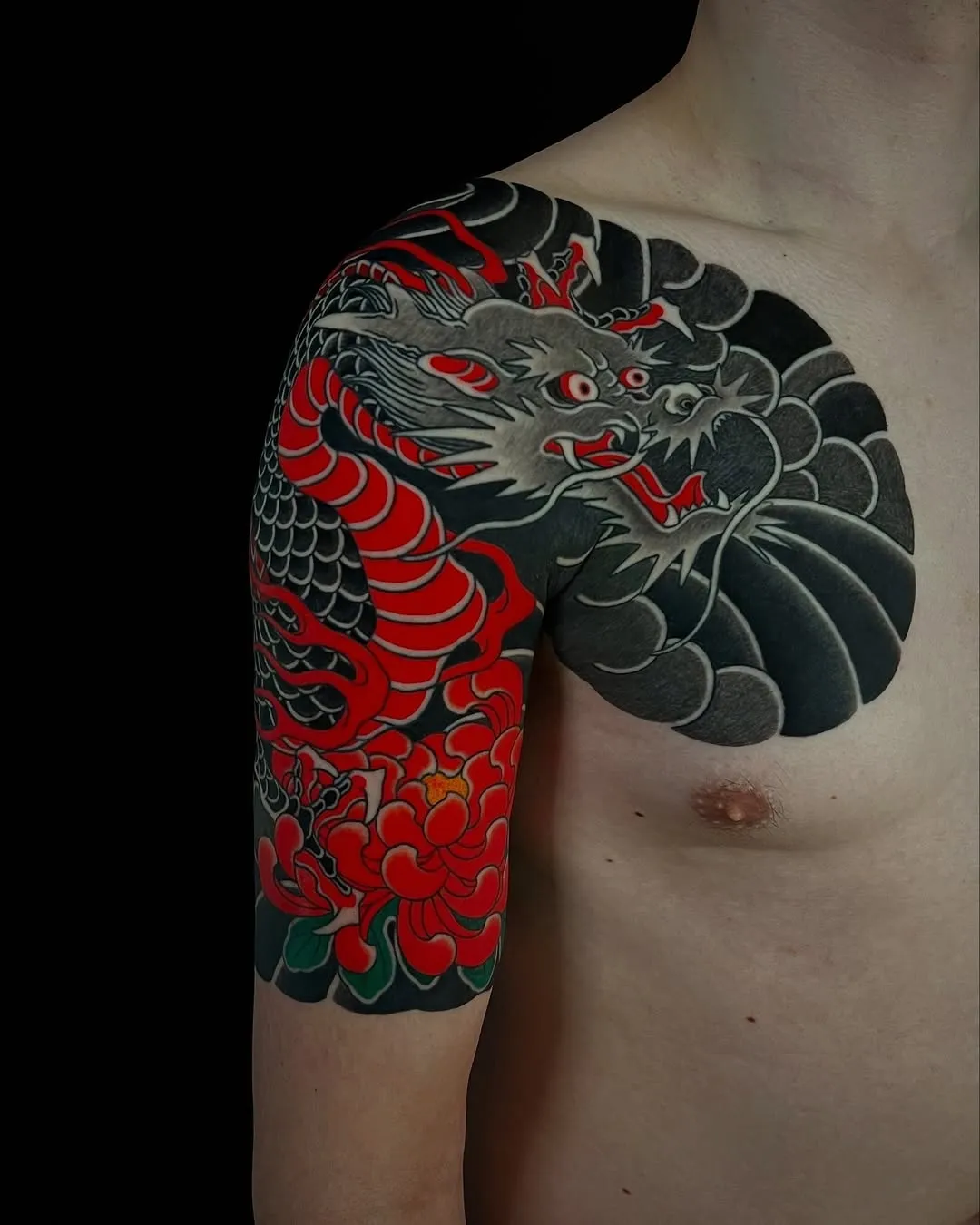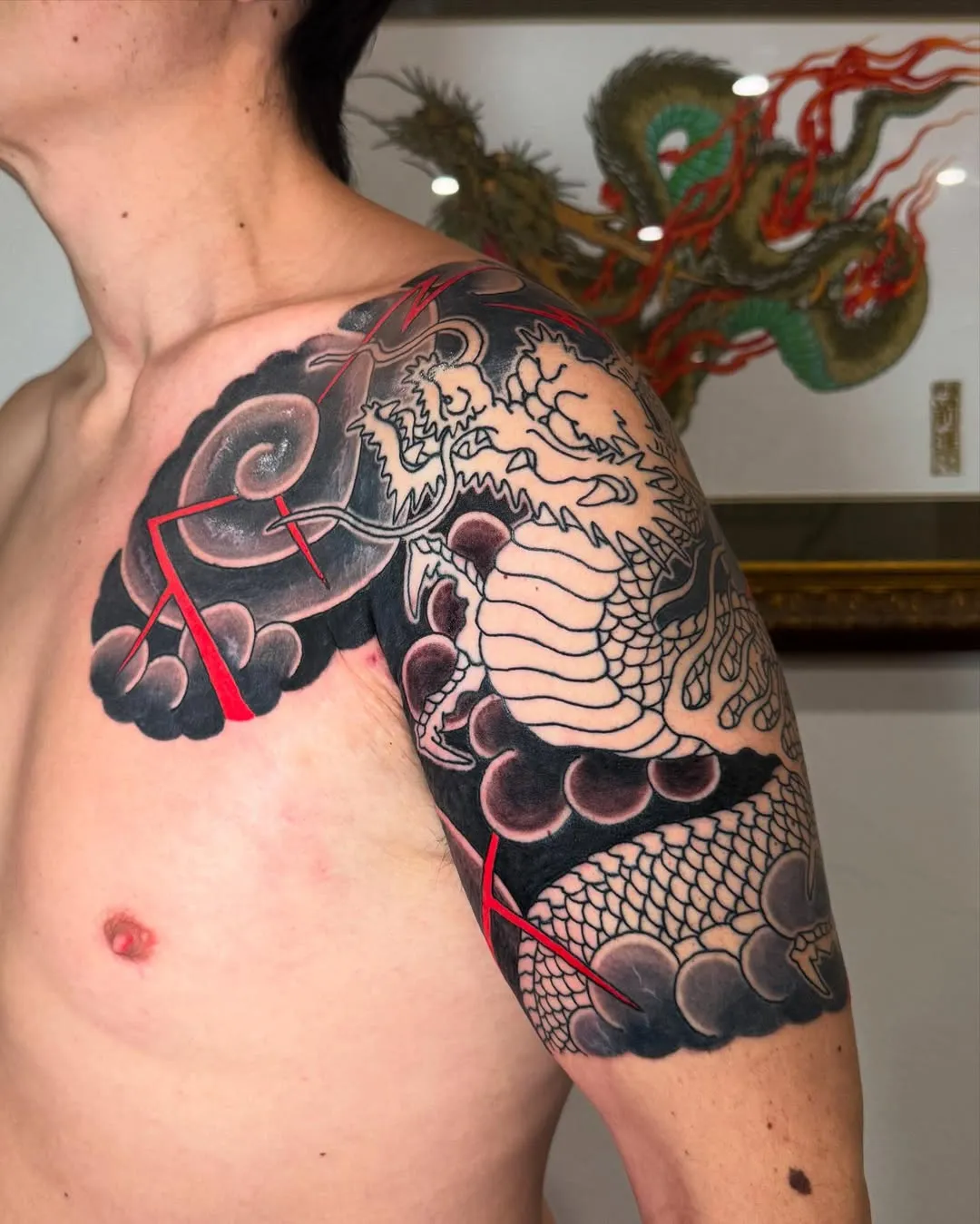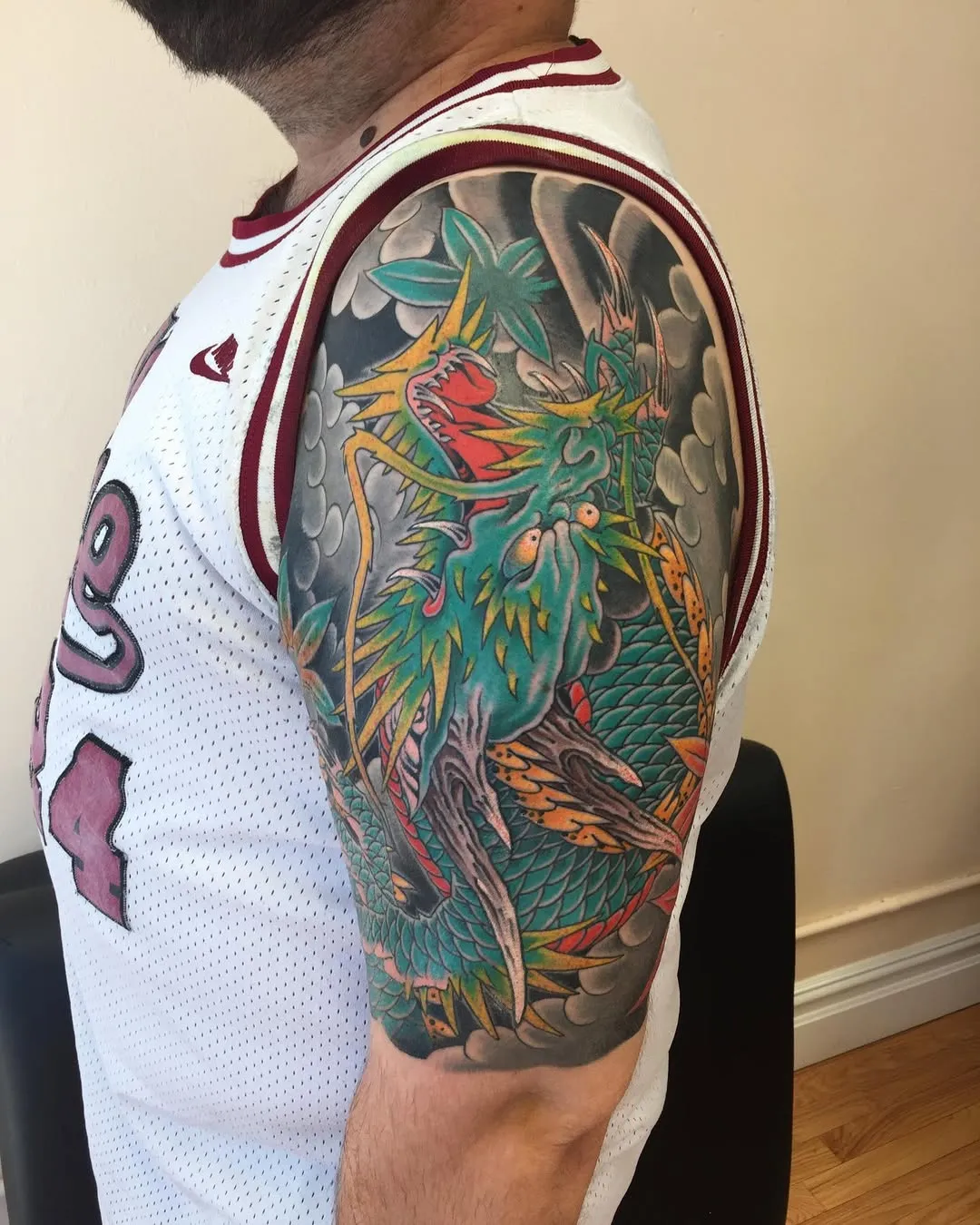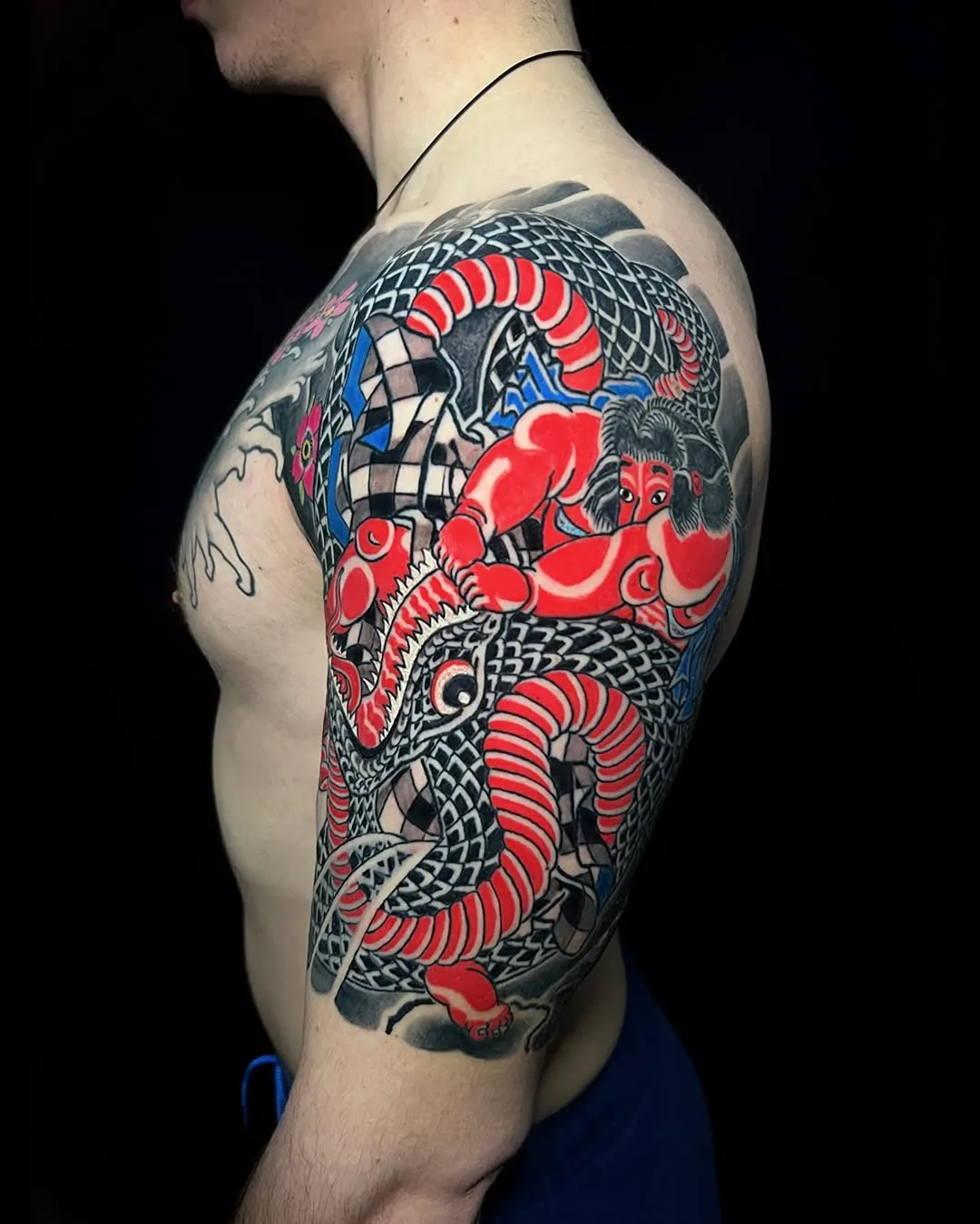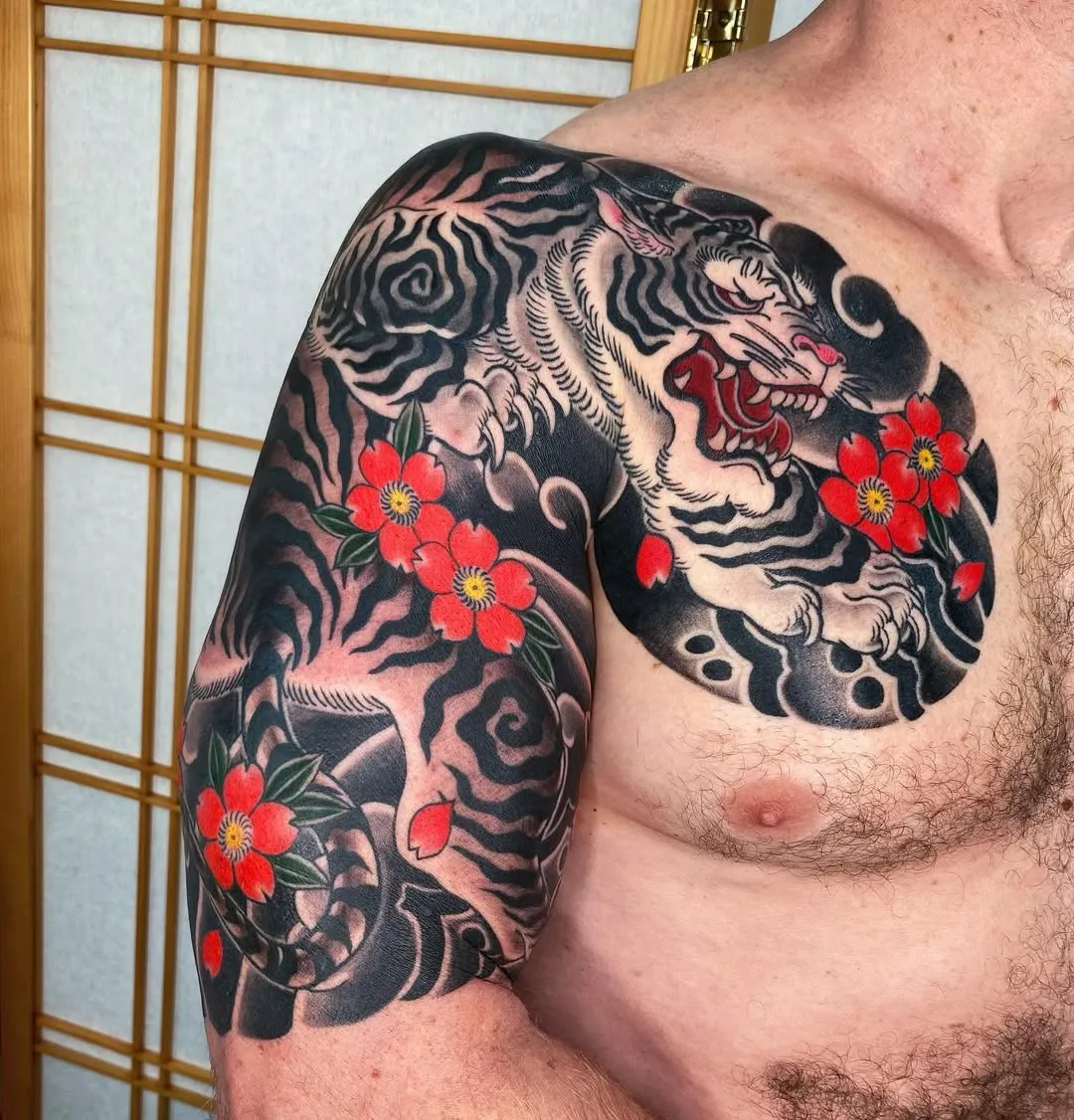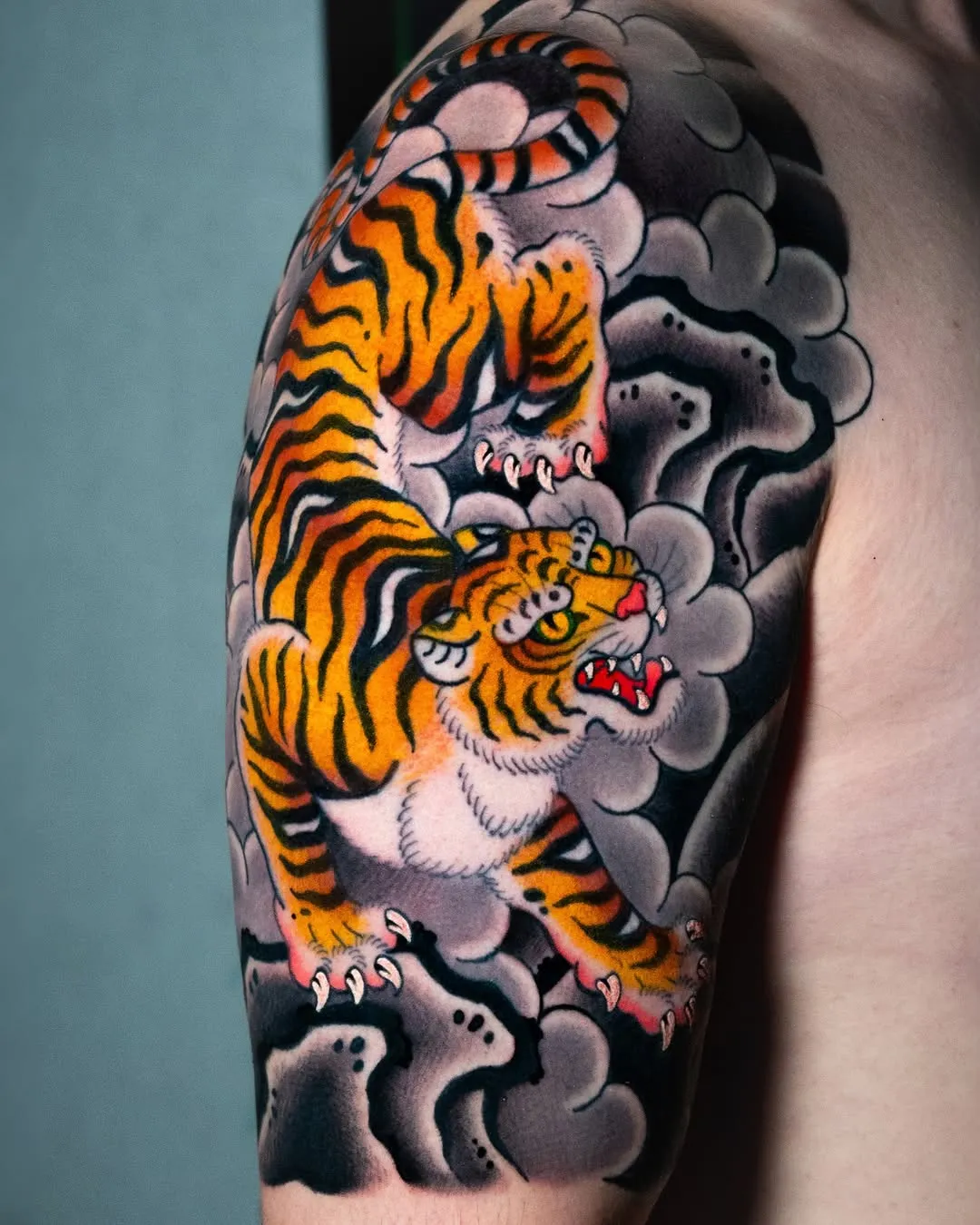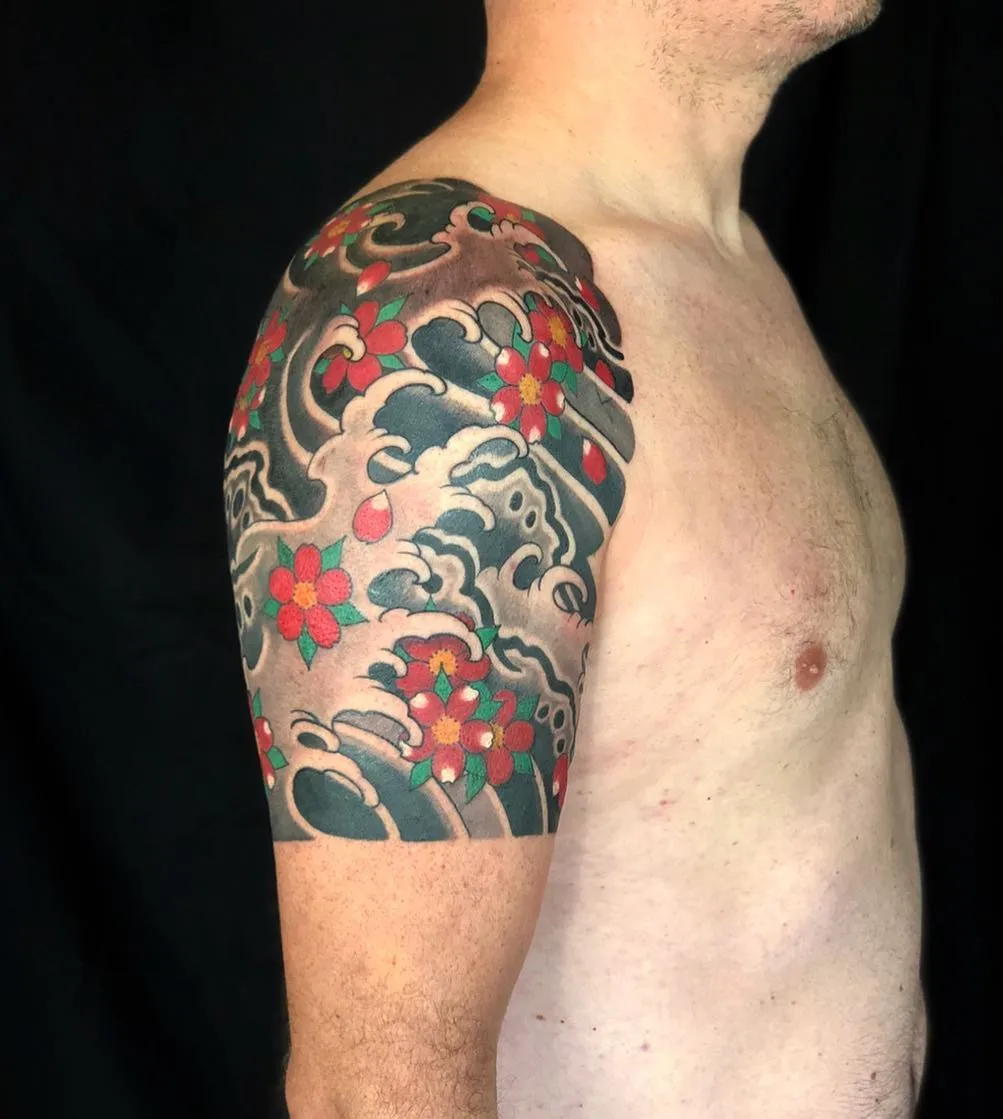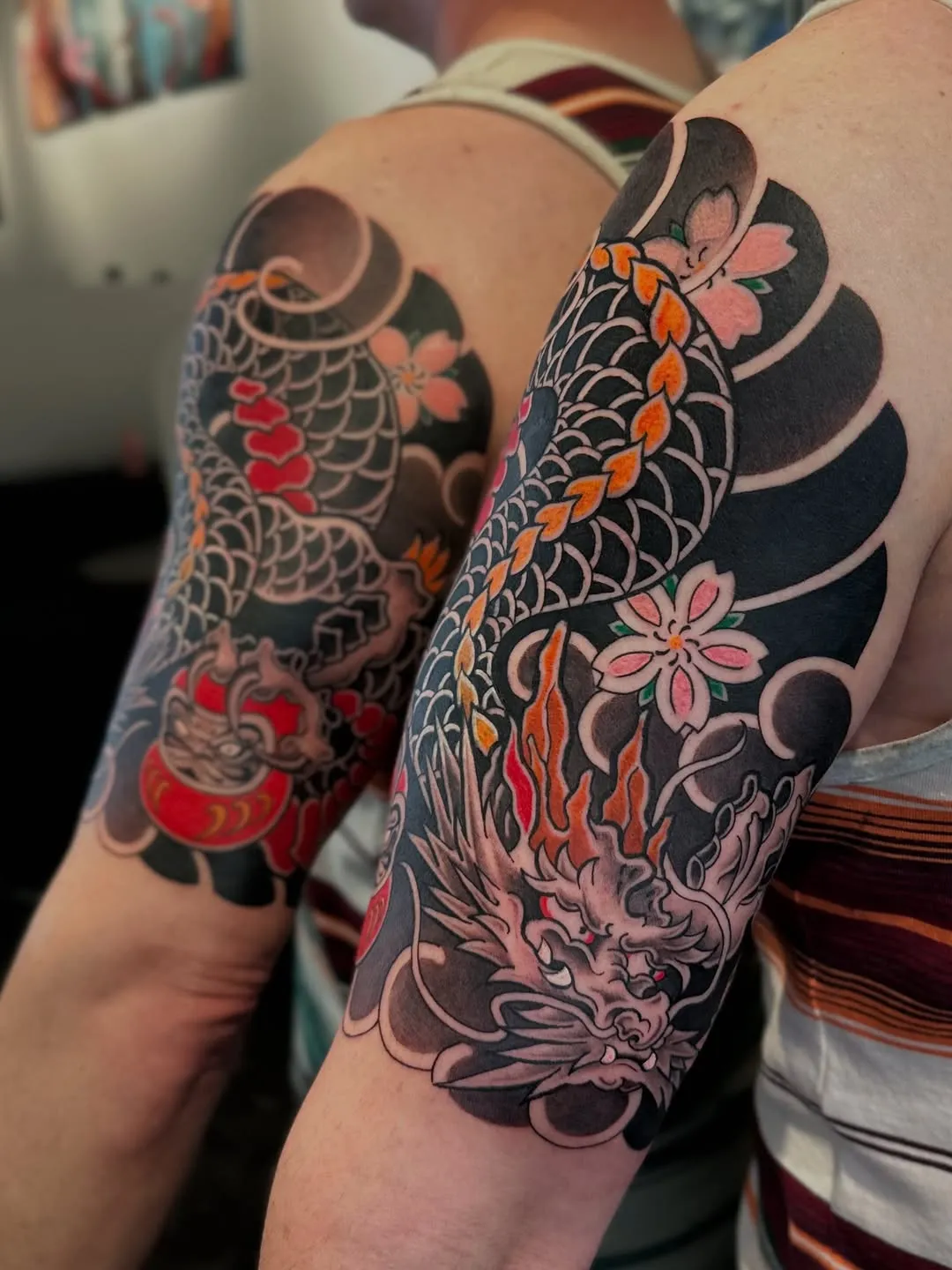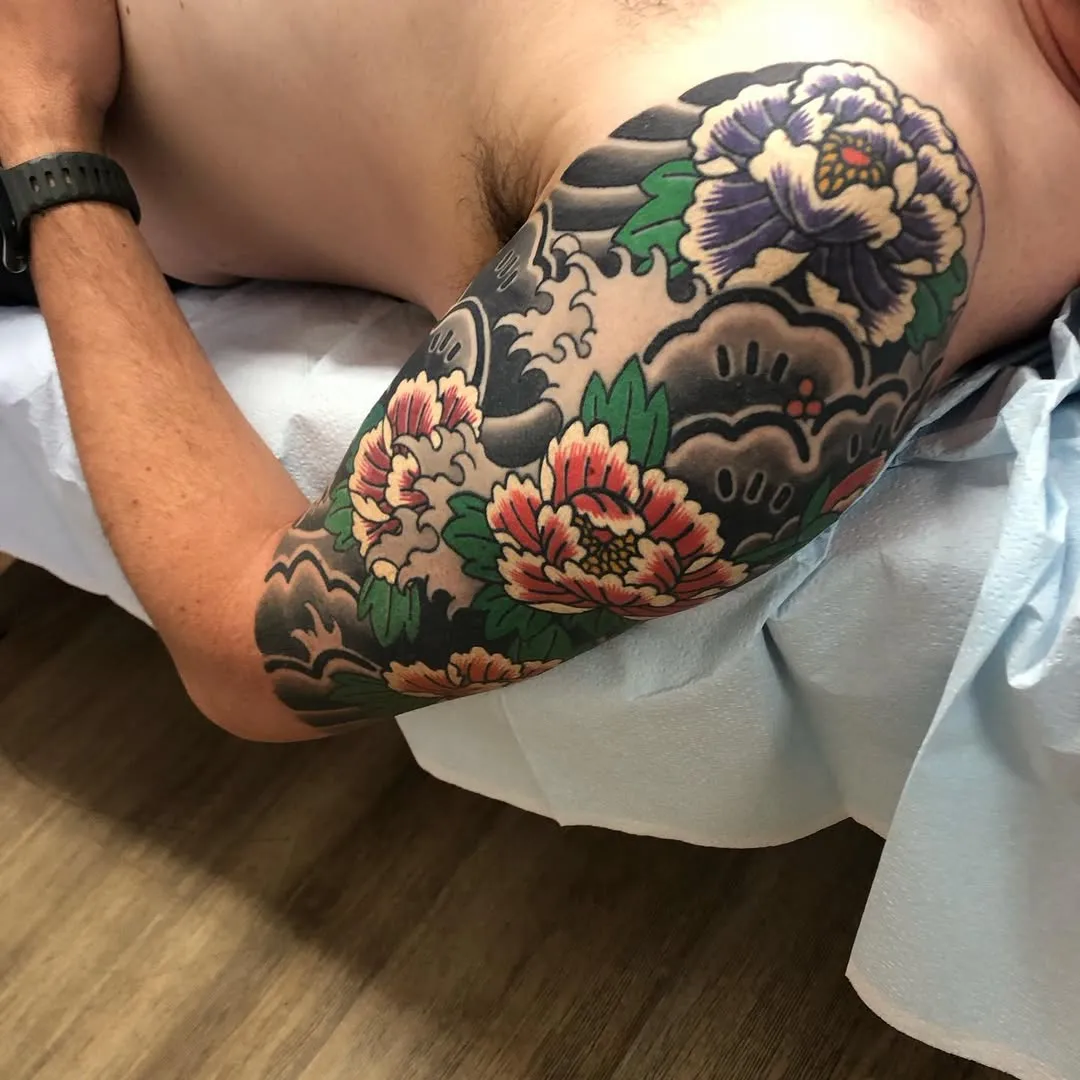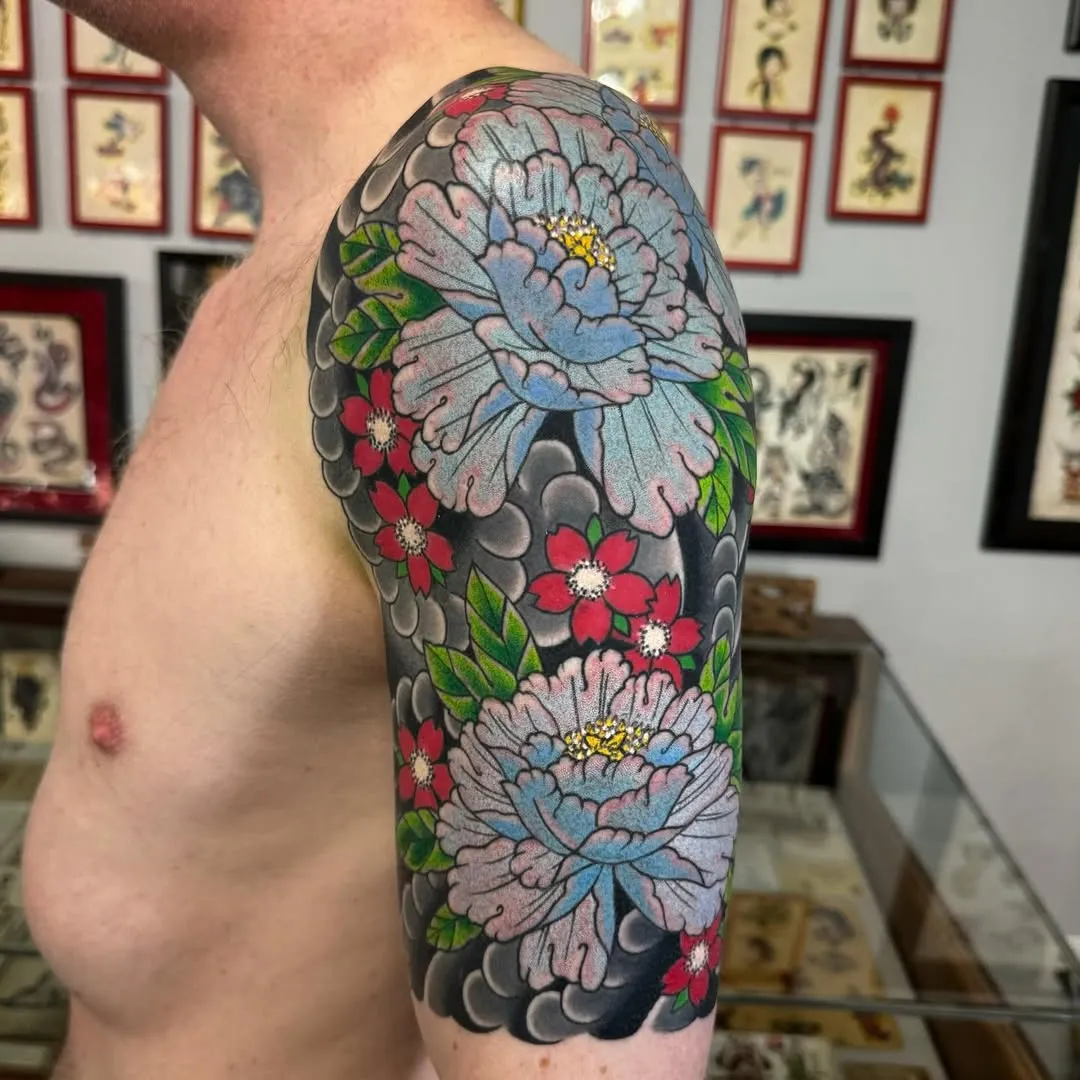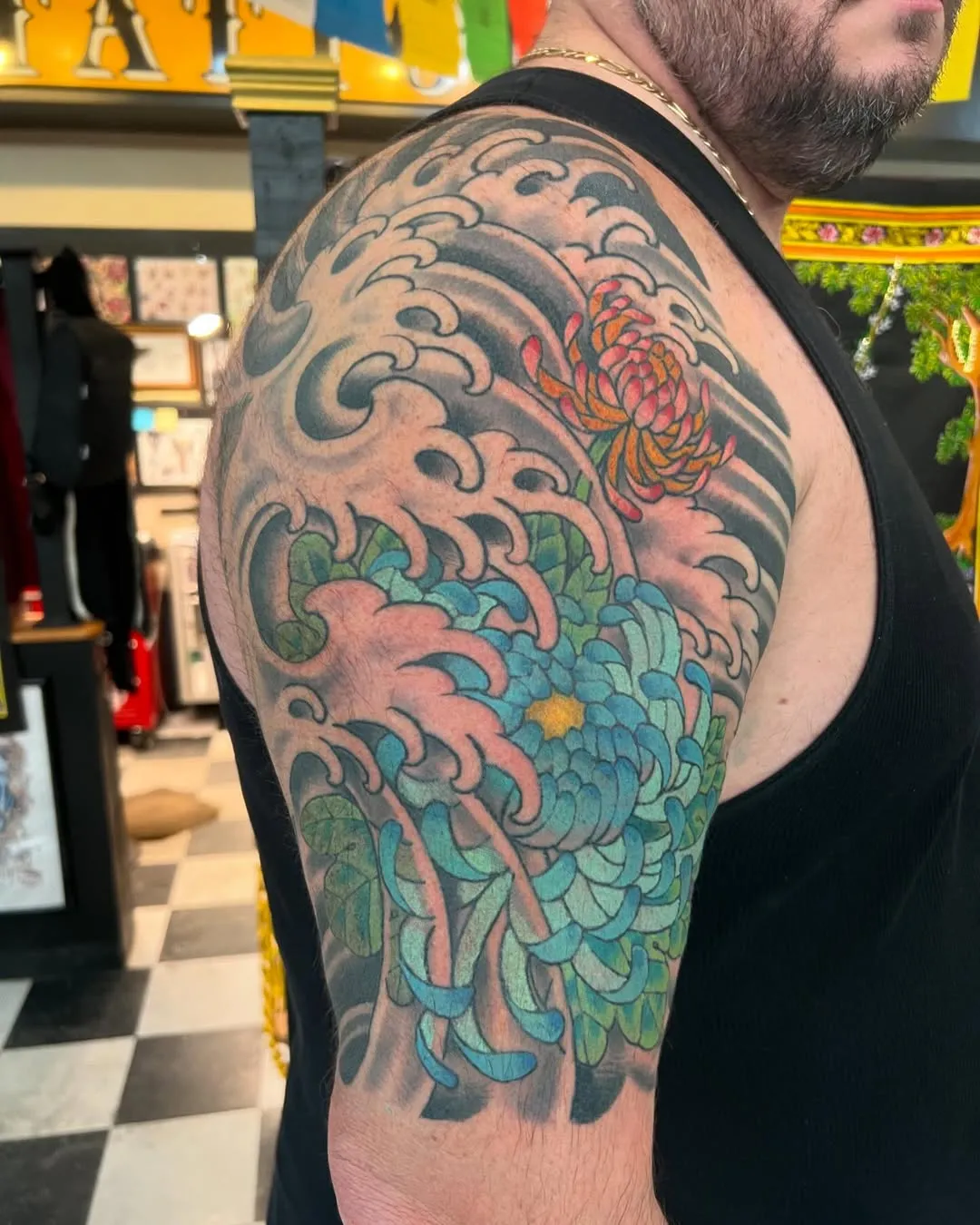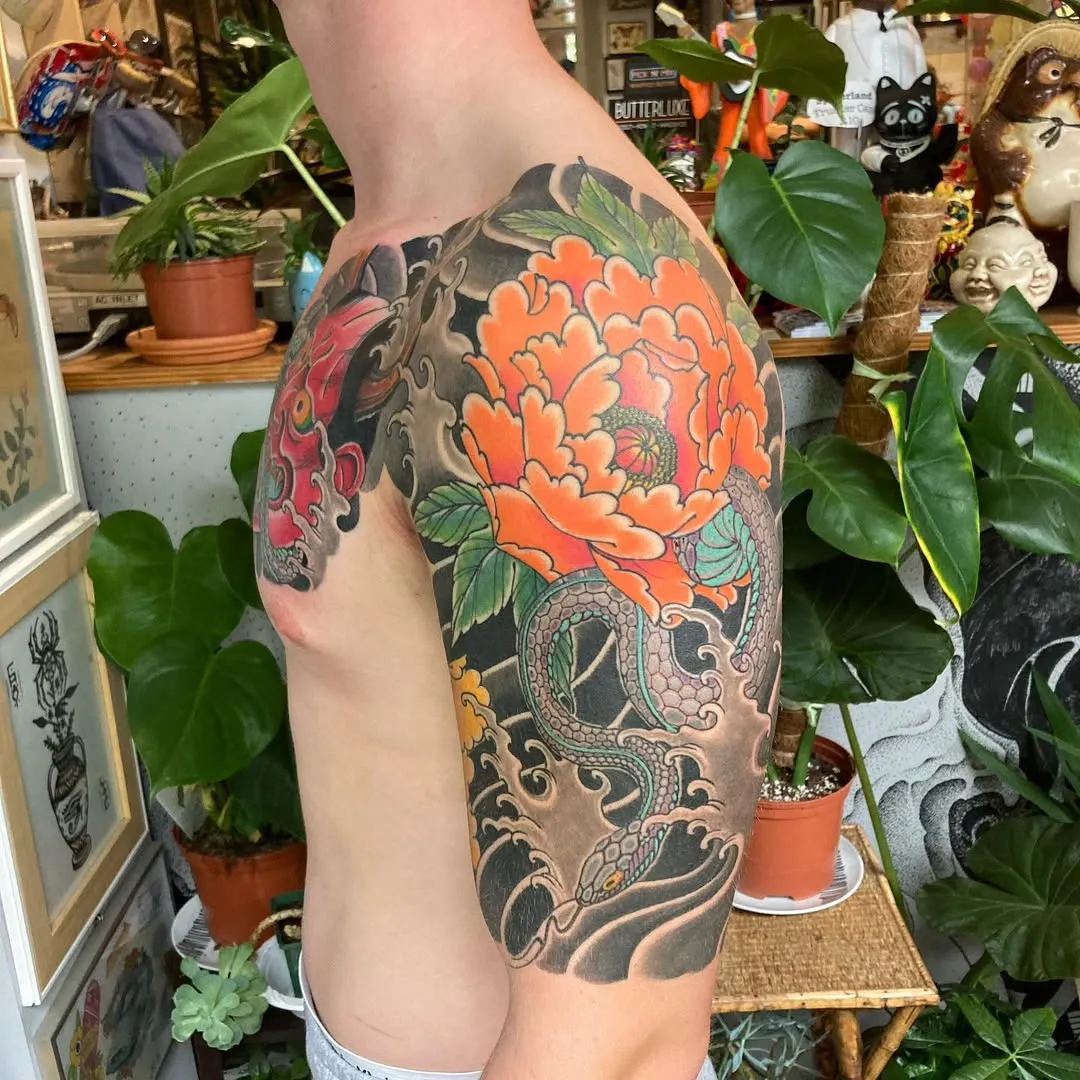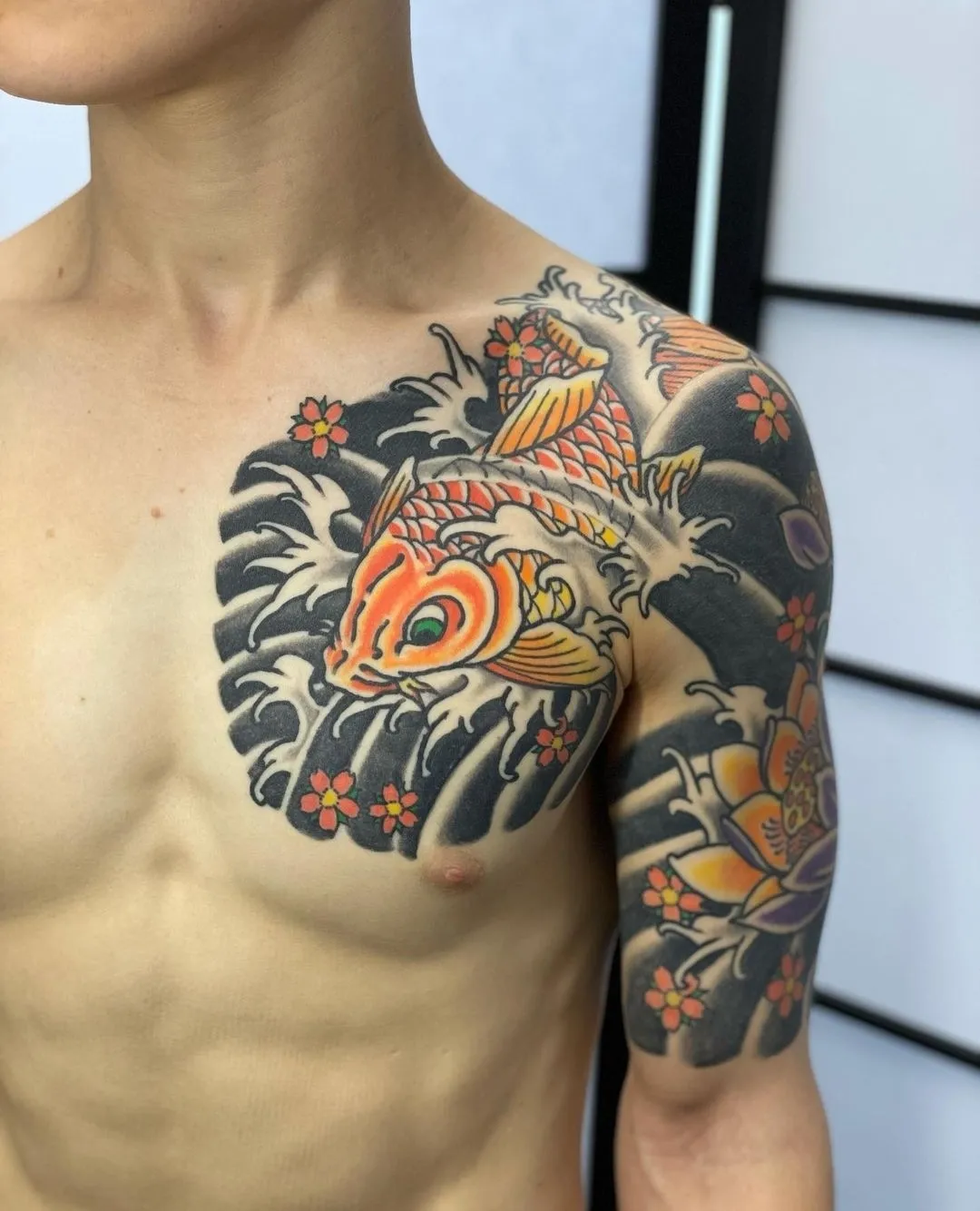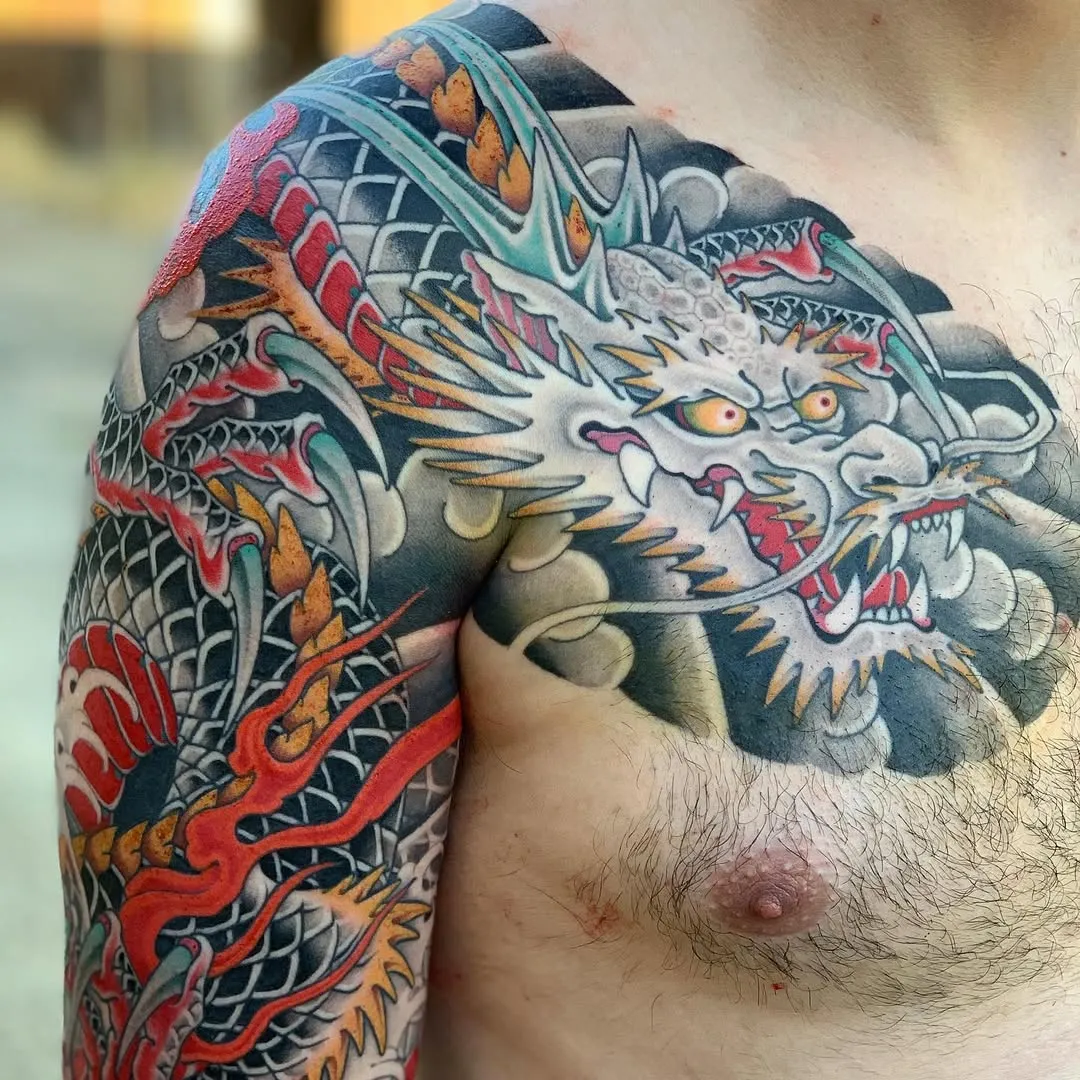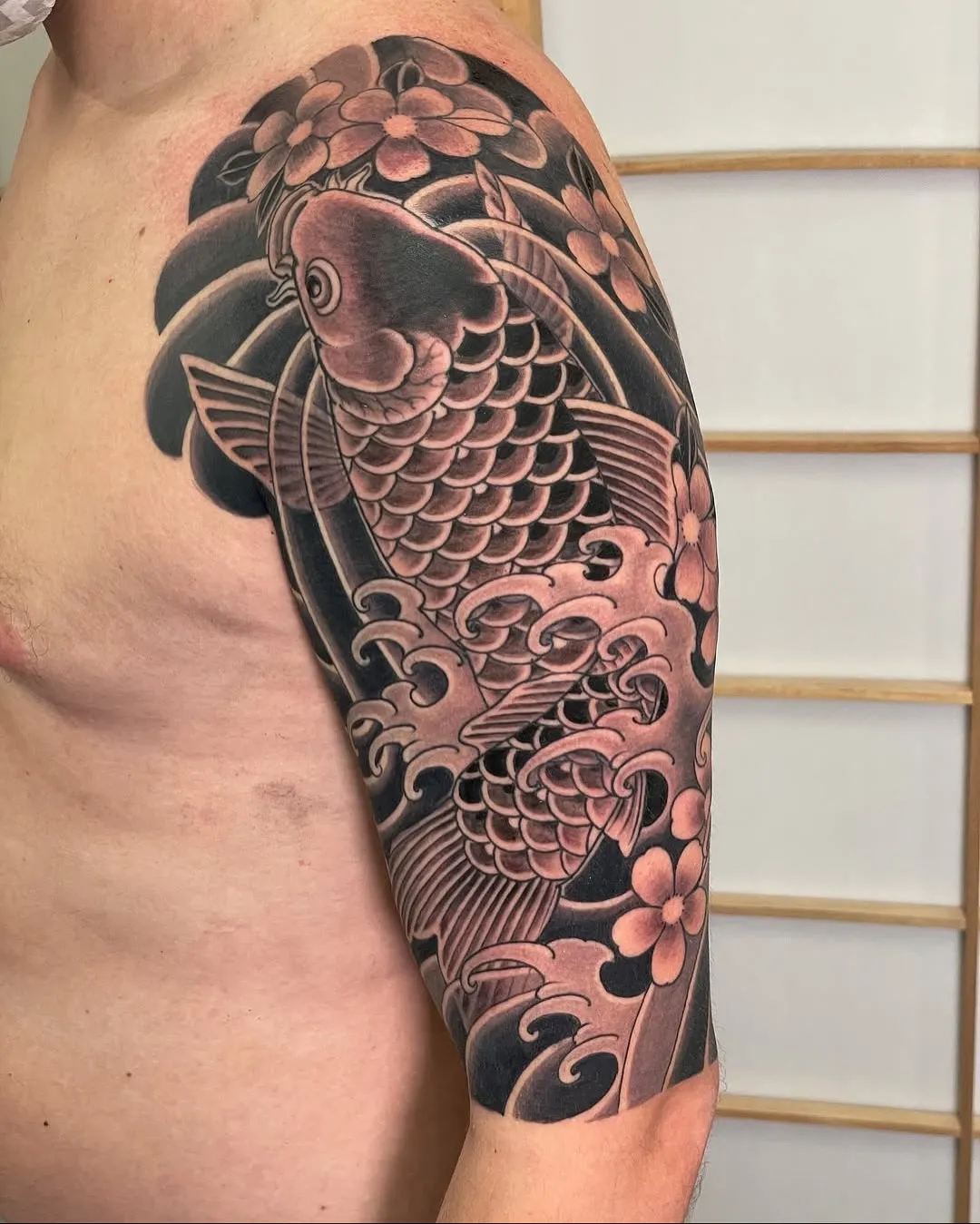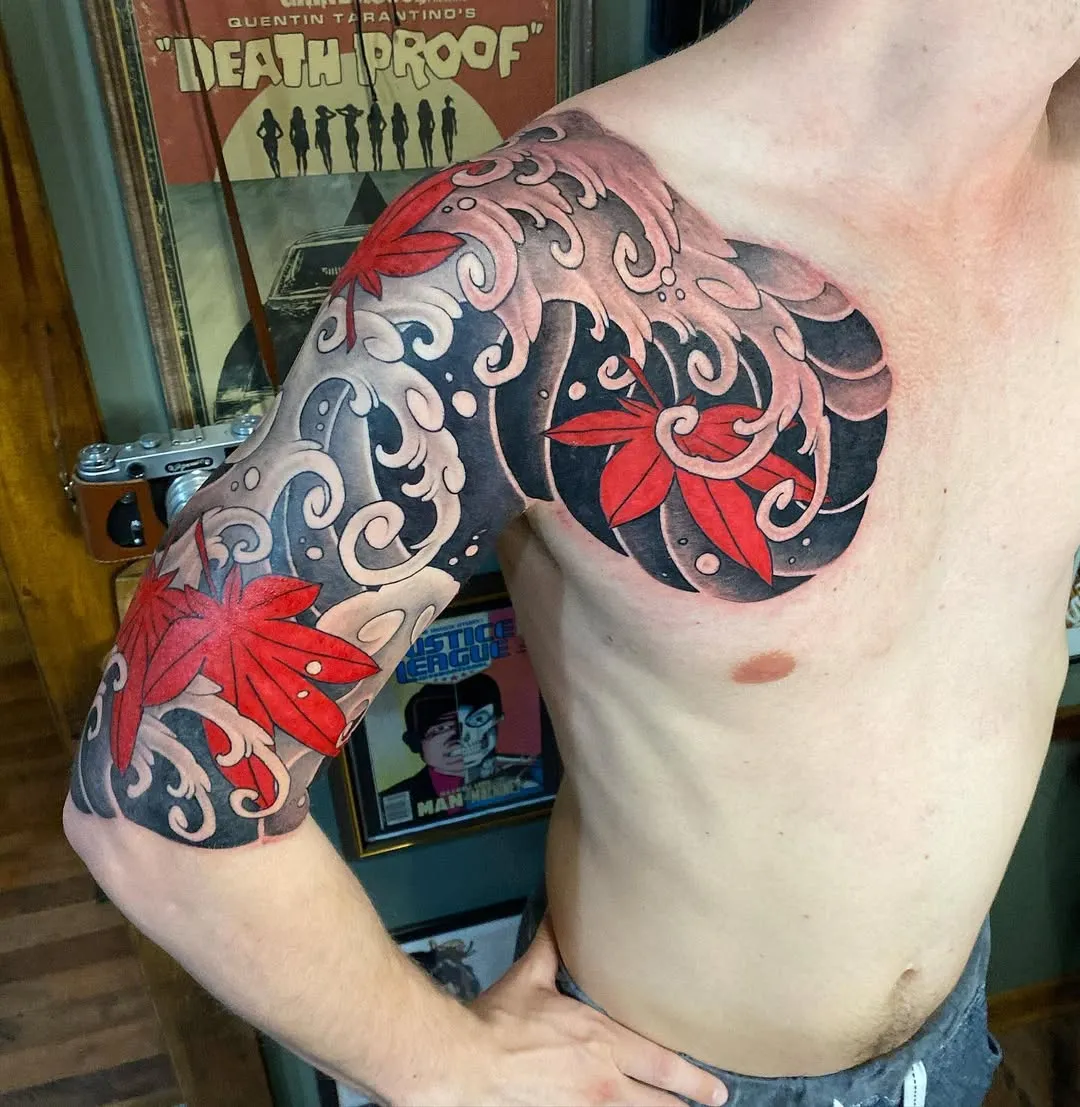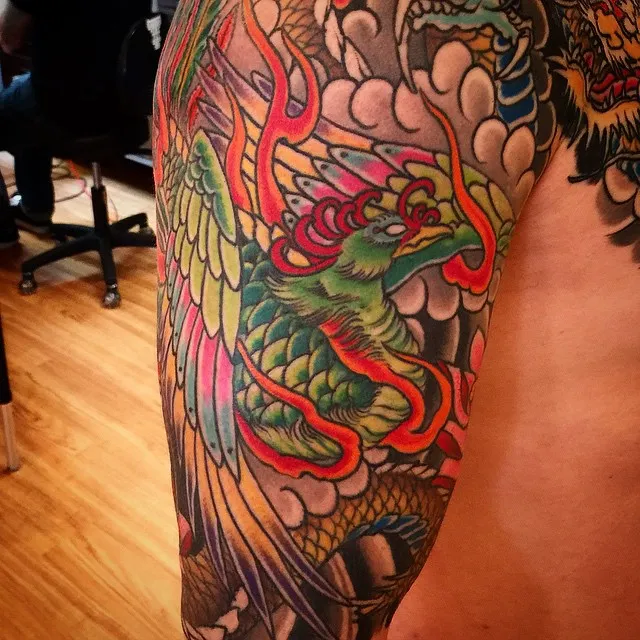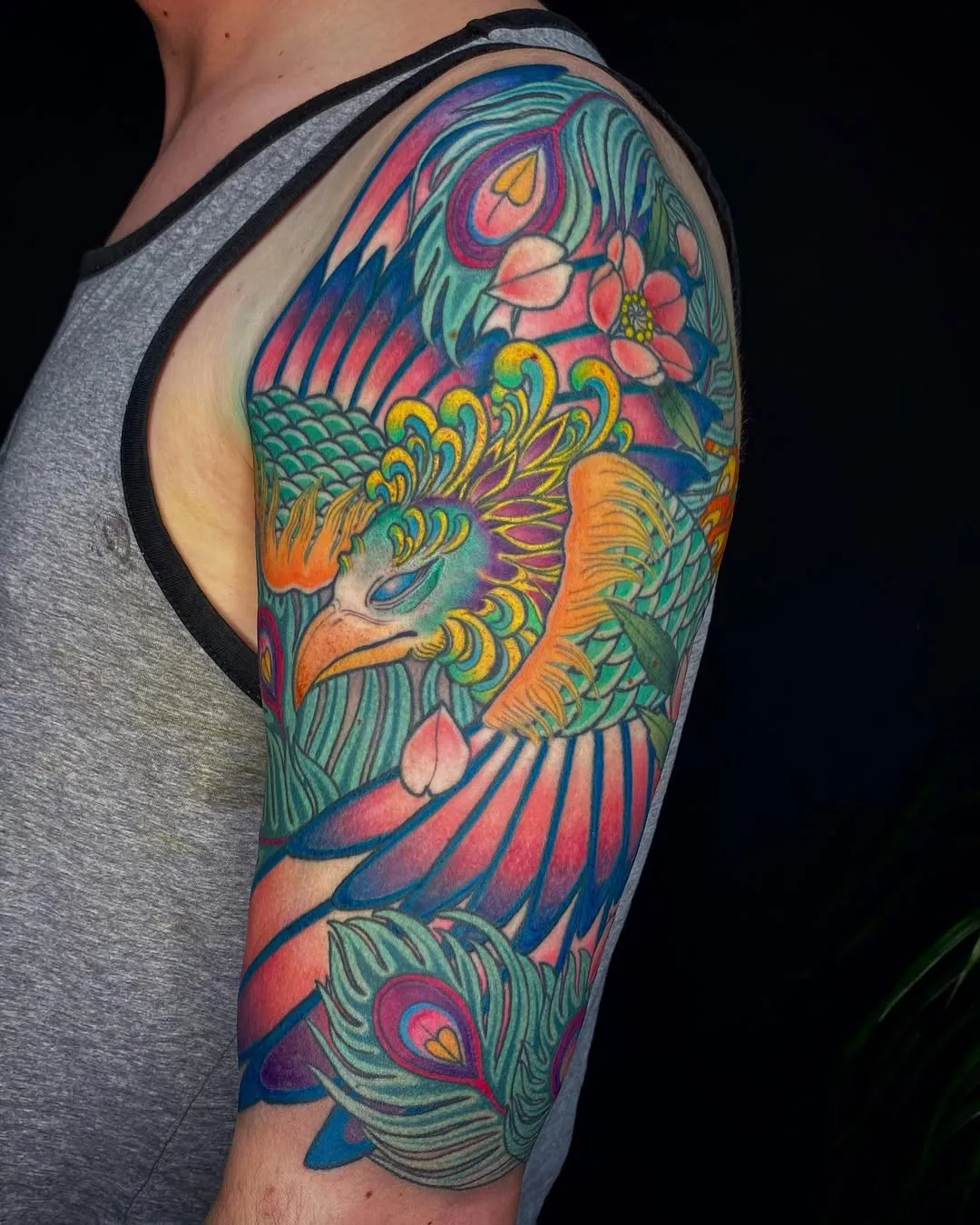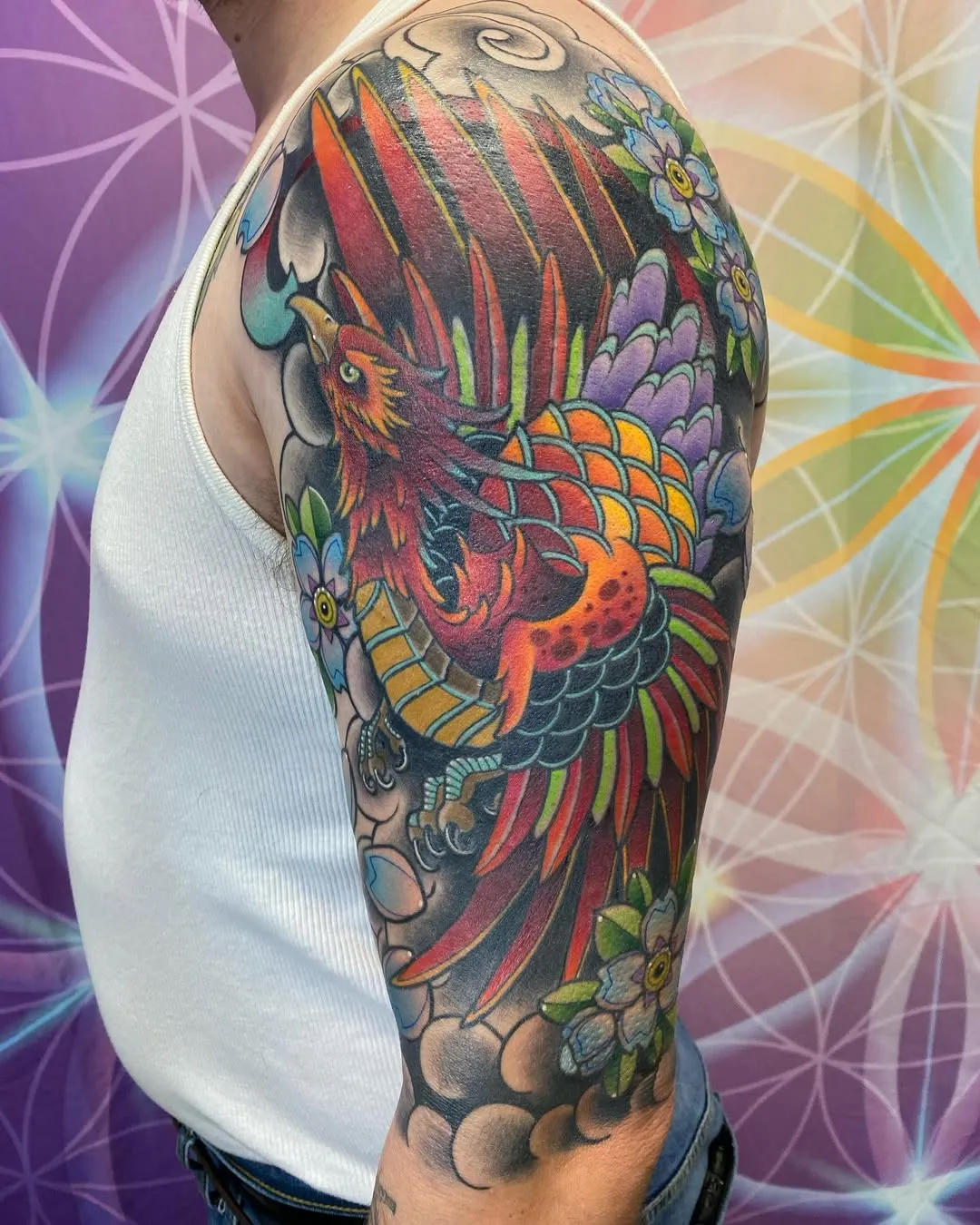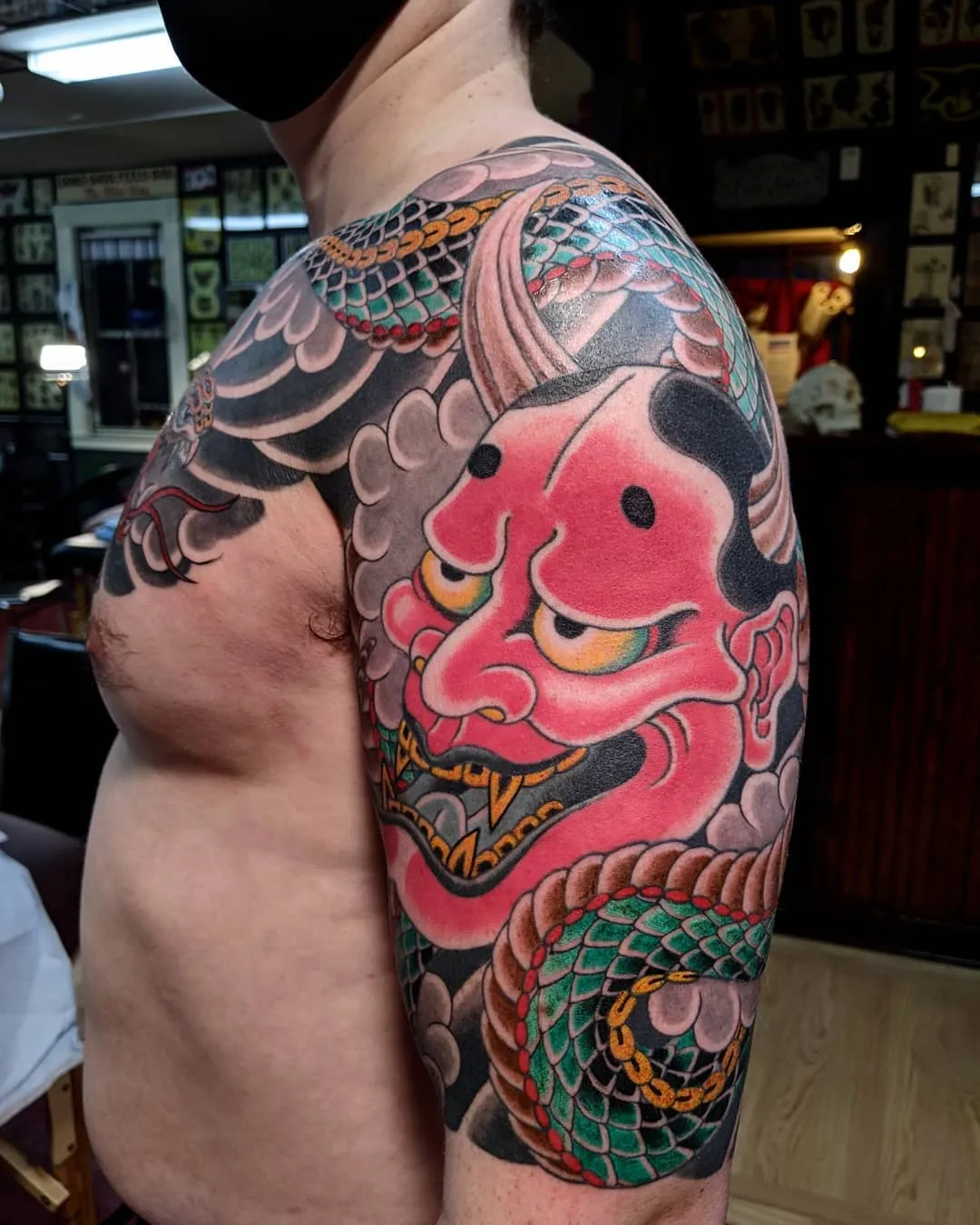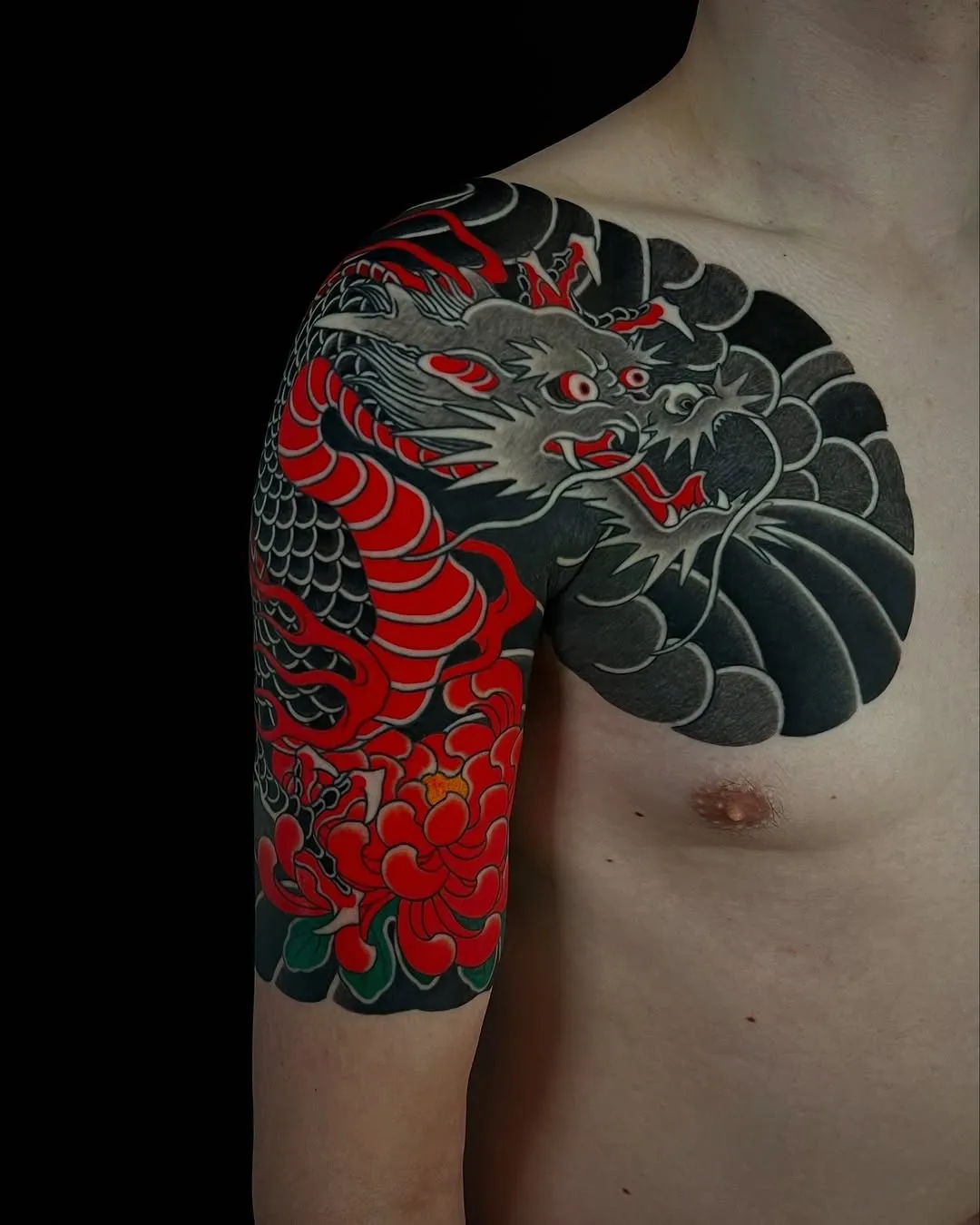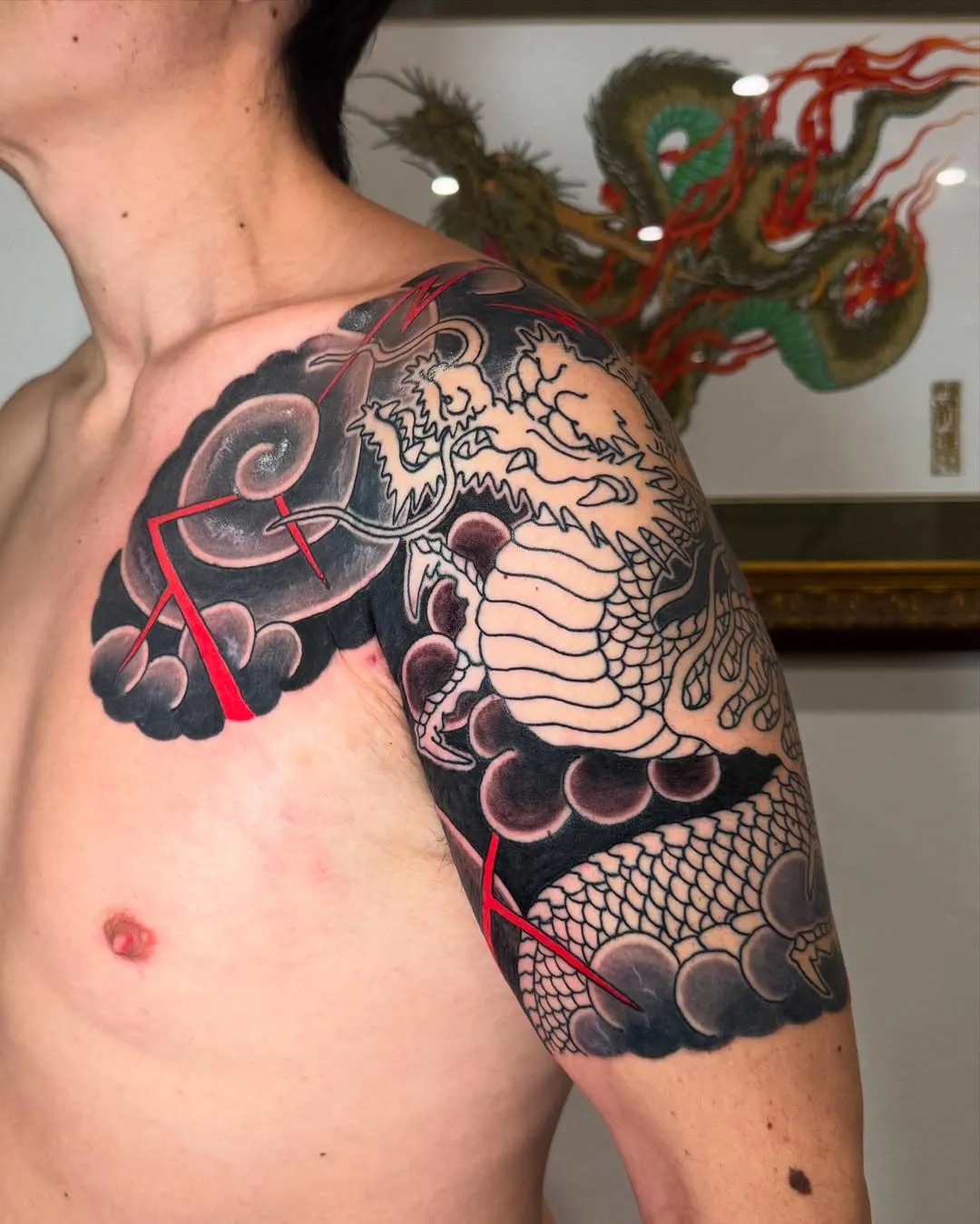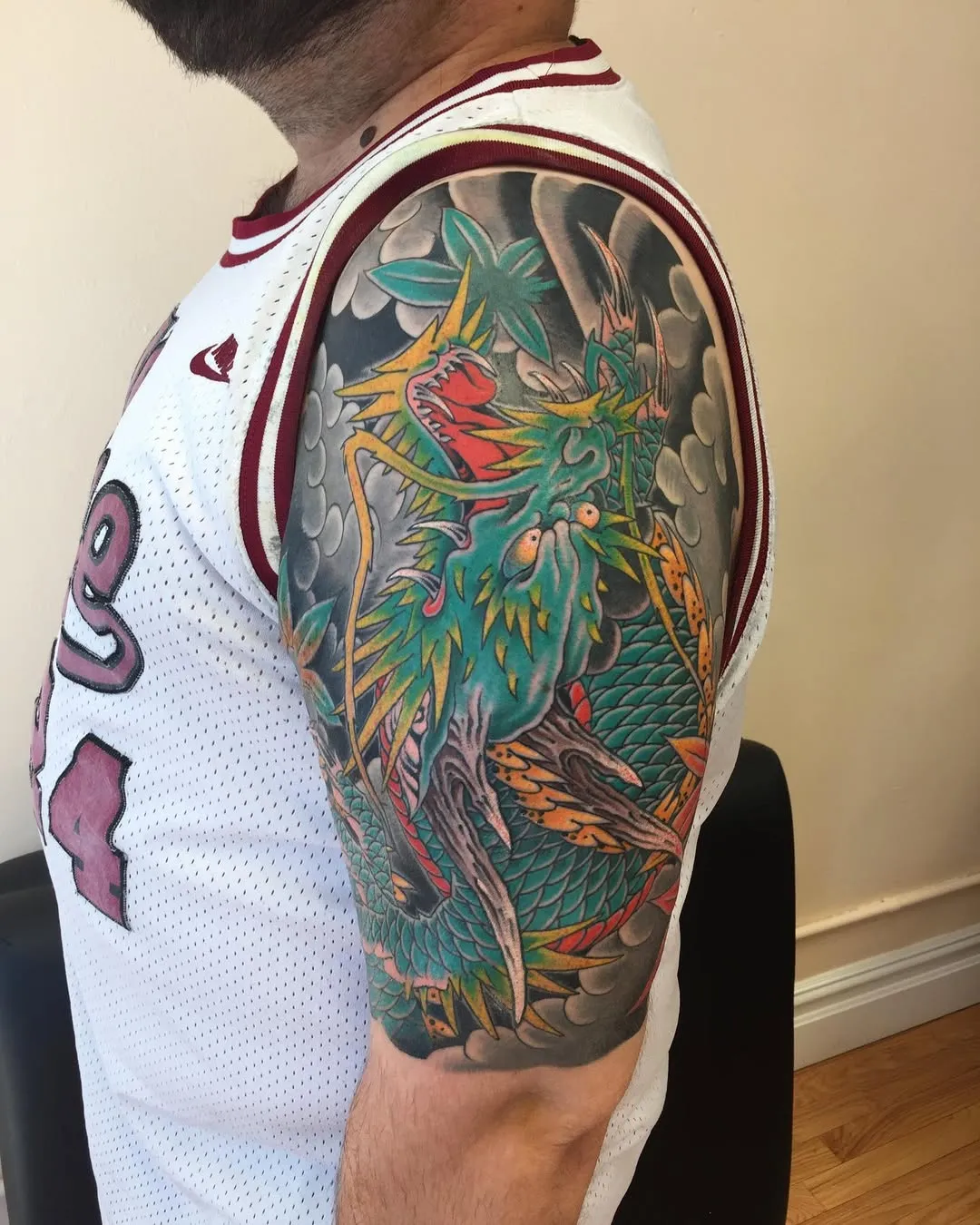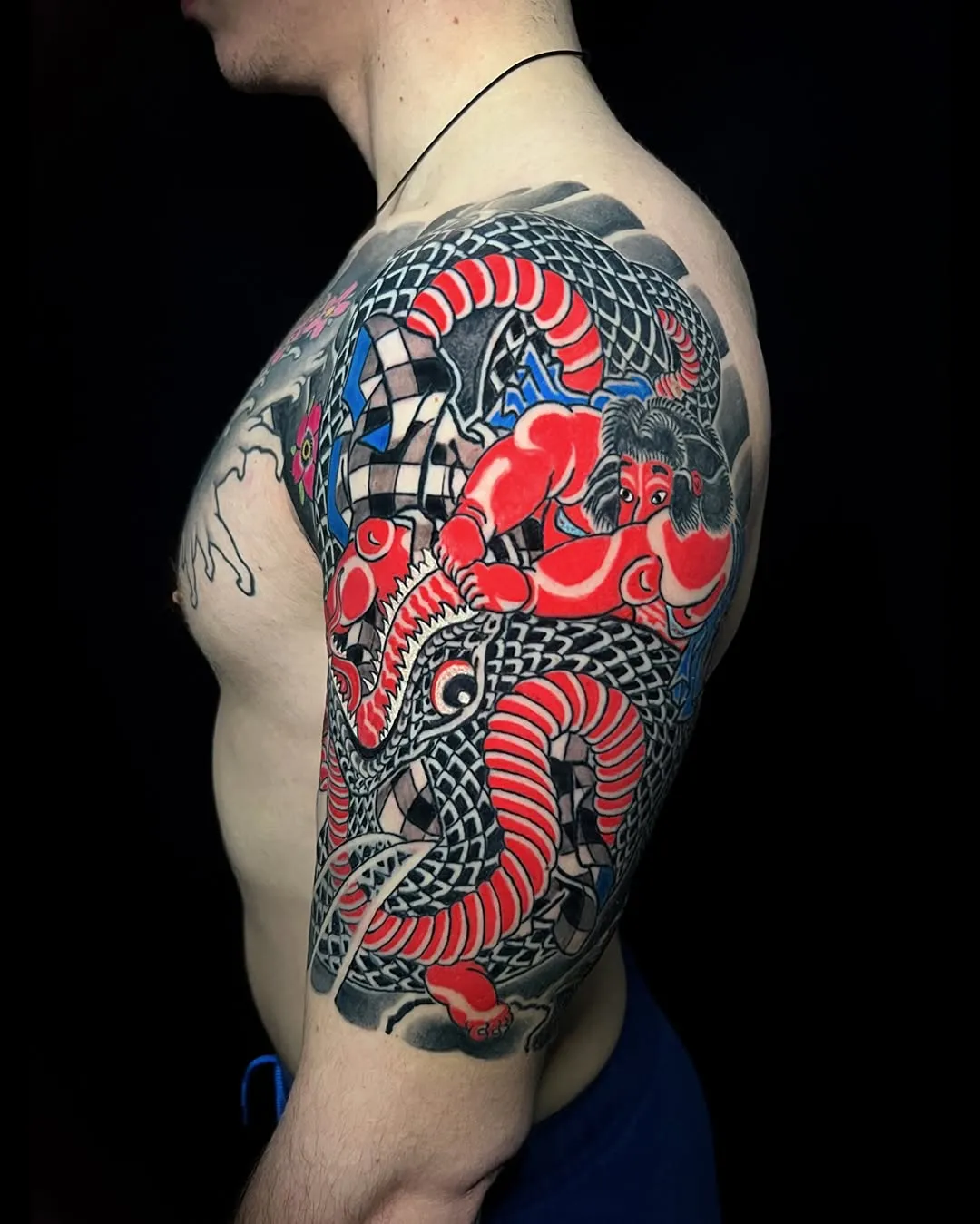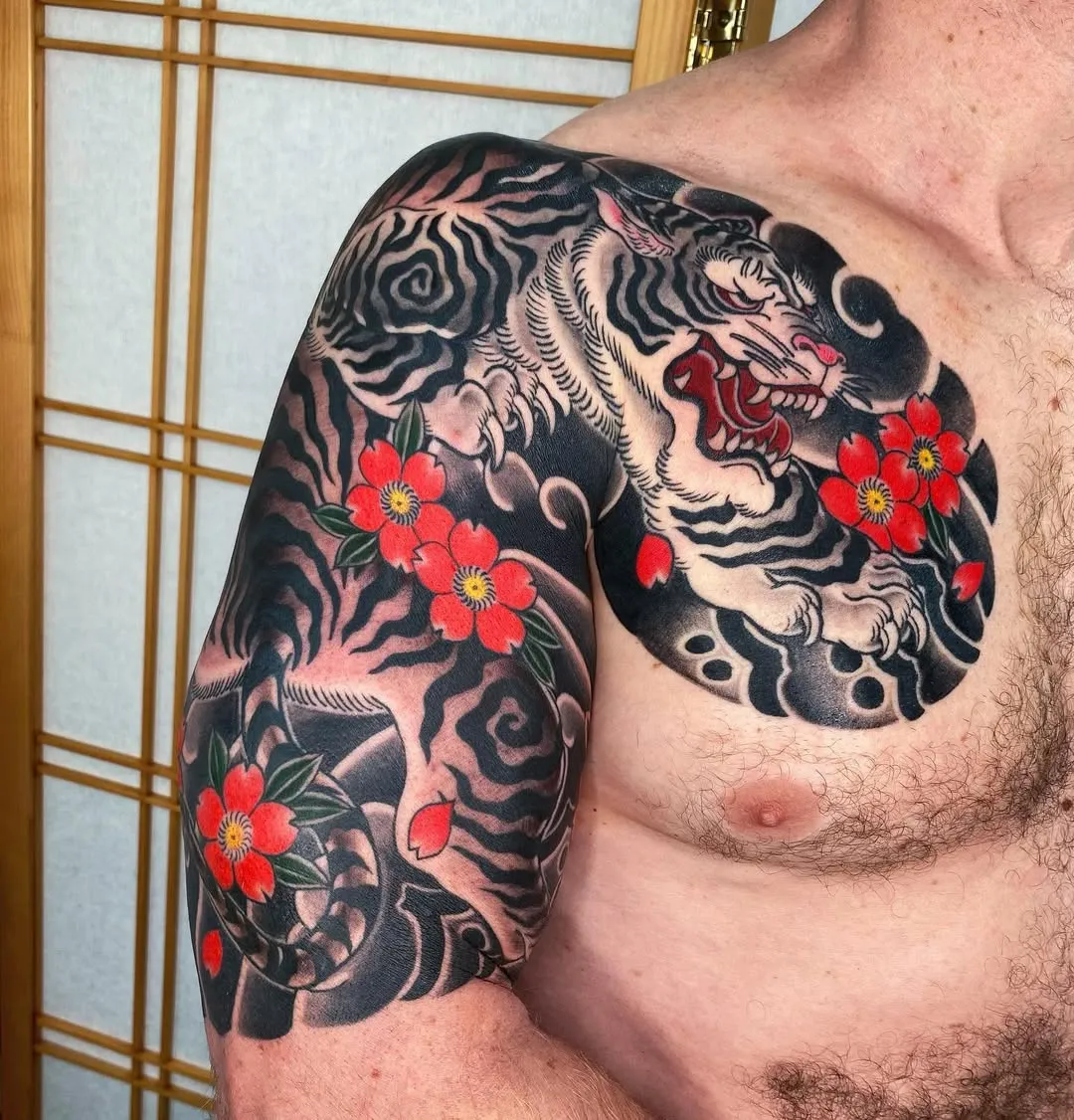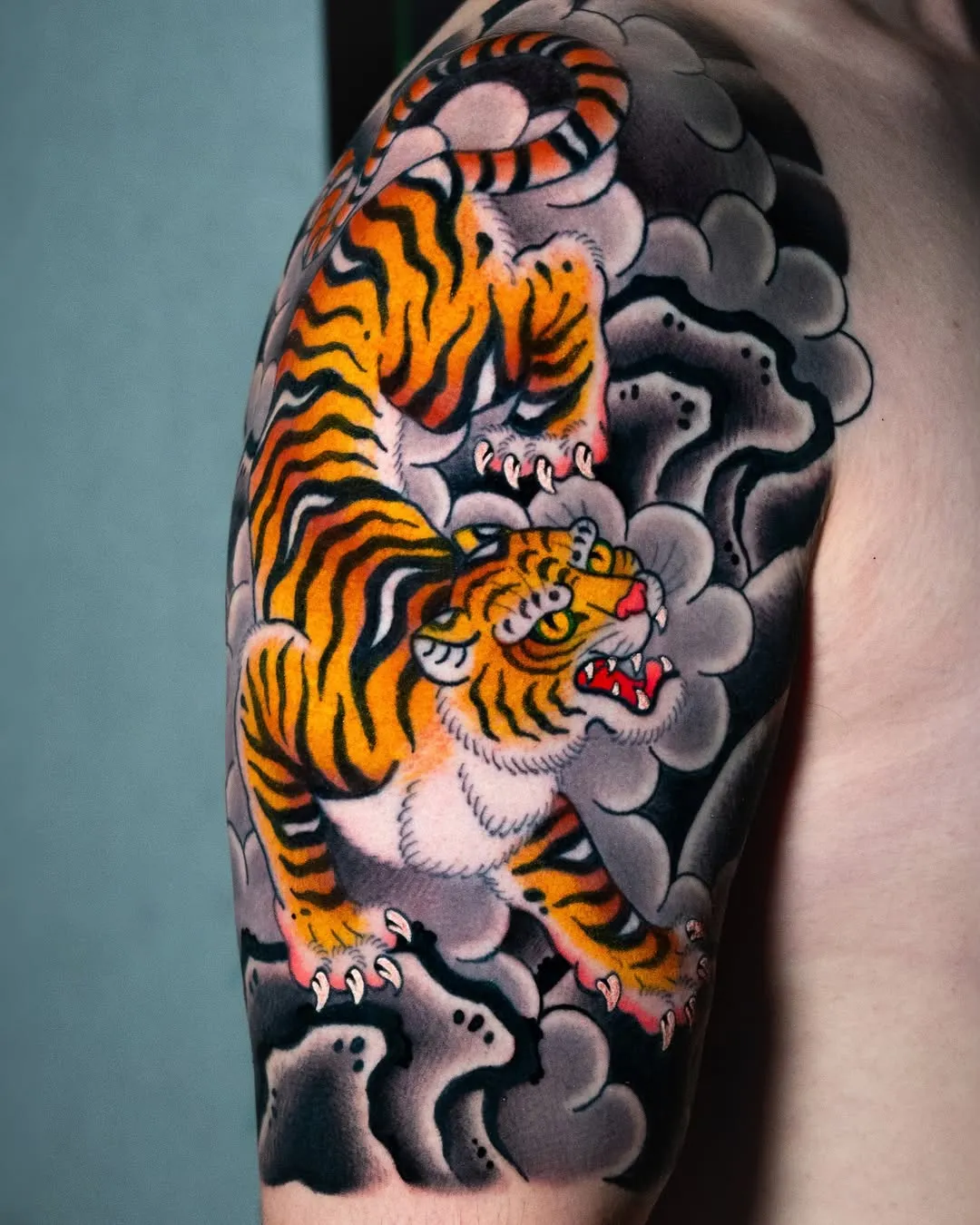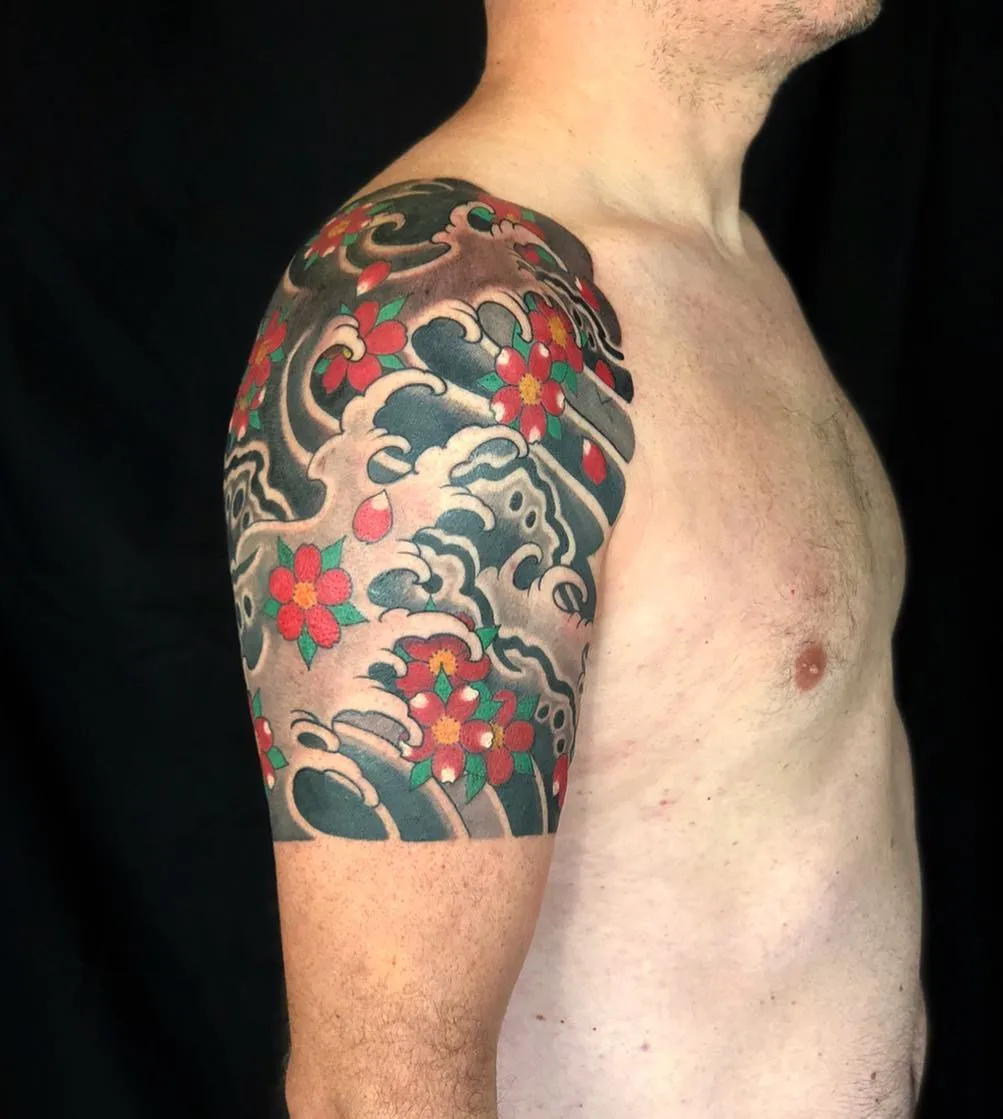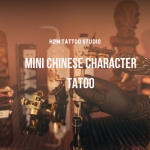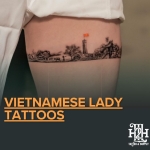Every Traditional Japanese Bicep Tattoo carries its own unique “vibe” - powerful, captivating, and rich in artistry. When placed on the arm, it not only enhances the body’s natural lines but also reflects the wearer’s taste and personality. From the gentle cherry blossoms to the majestic dragons, Japanese tattoo art has always fascinated people with its intricate harmony of details that blend tradition with modern style. If you’re looking for inspiration for a one-of-a-kind Traditional Japanese Bicep Tattoo, H2M Tattoo Studio is here to turn your idea into a personalized masterpiece - distinctive, stylish, and timeless.
>>>> READ MORE: Japanese-Asian Tattoo
30+ Traditional Japanese Bicep Tattoo Designs
Classic Dragon Sleeves
Half sleeve designs featuring dragons represent the epitome of Japanese tattooing ambition and artistry. These compositions typically showcase a single dragon with serpentine body coiling around the entire arm, often emerging from water or clouds at the wrist or shoulder and extending toward the opposite end. The dragon's positioning allows its body to wrap naturally around the arm's cylindrical form, with the head positioned on either the outer or inner upper arm for maximum visibility.
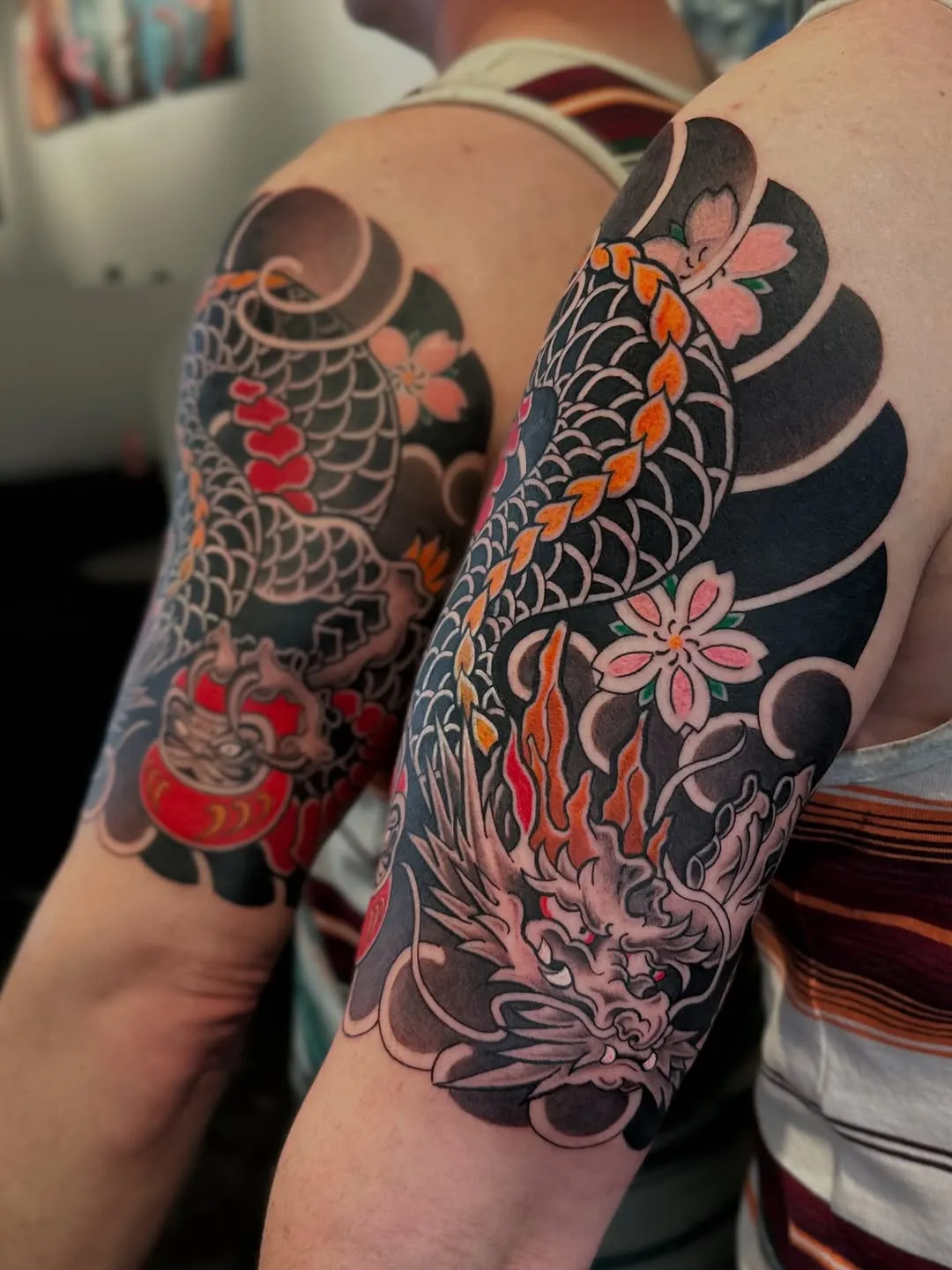
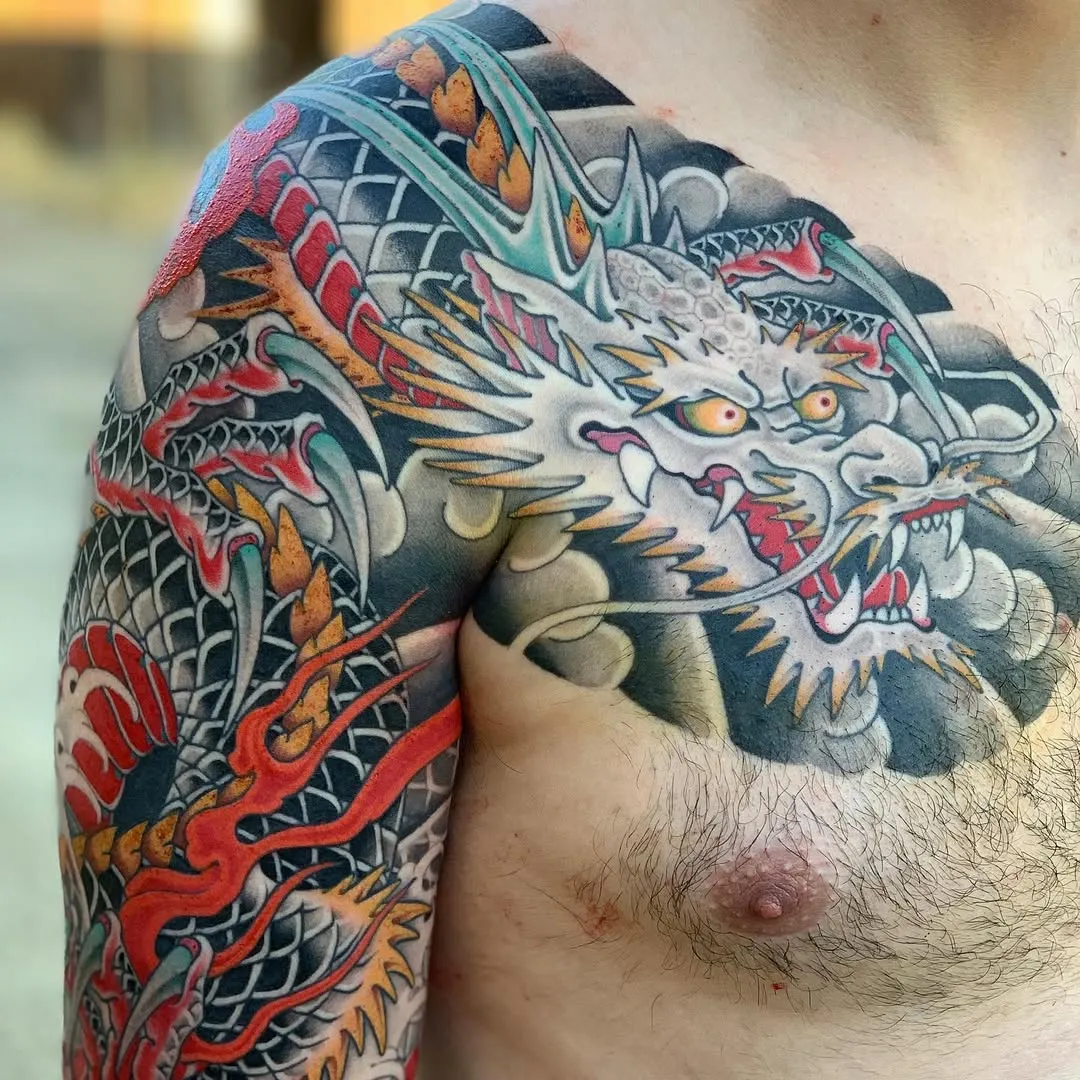
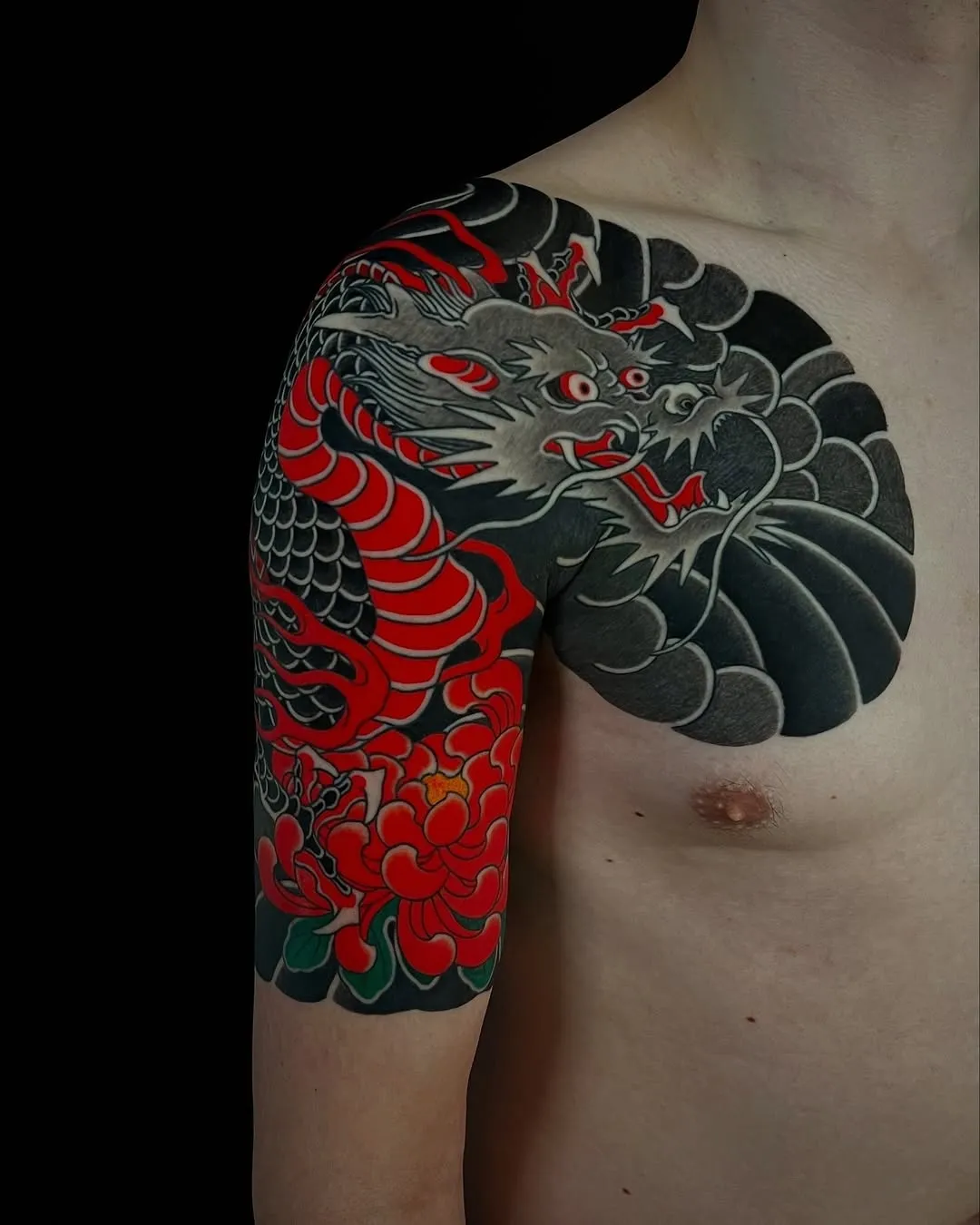
Artistic elements include intricate scale work covering the dragon's body, each scale individually rendered to create texture and dimensionality. The dragon typically clutches a pearl or jewel in one claw, symbolizing wisdom and enlightenment. Surrounding elements might include swirling clouds providing background depth, stylized waves at the lower arm, and strategic use of wind bars (parallel curved lines suggesting motion) to enhance the sense of dynamic movement. Color variations range from traditional black and grey to vibrant green, blue, or gold dragons set against contrasting backgrounds.
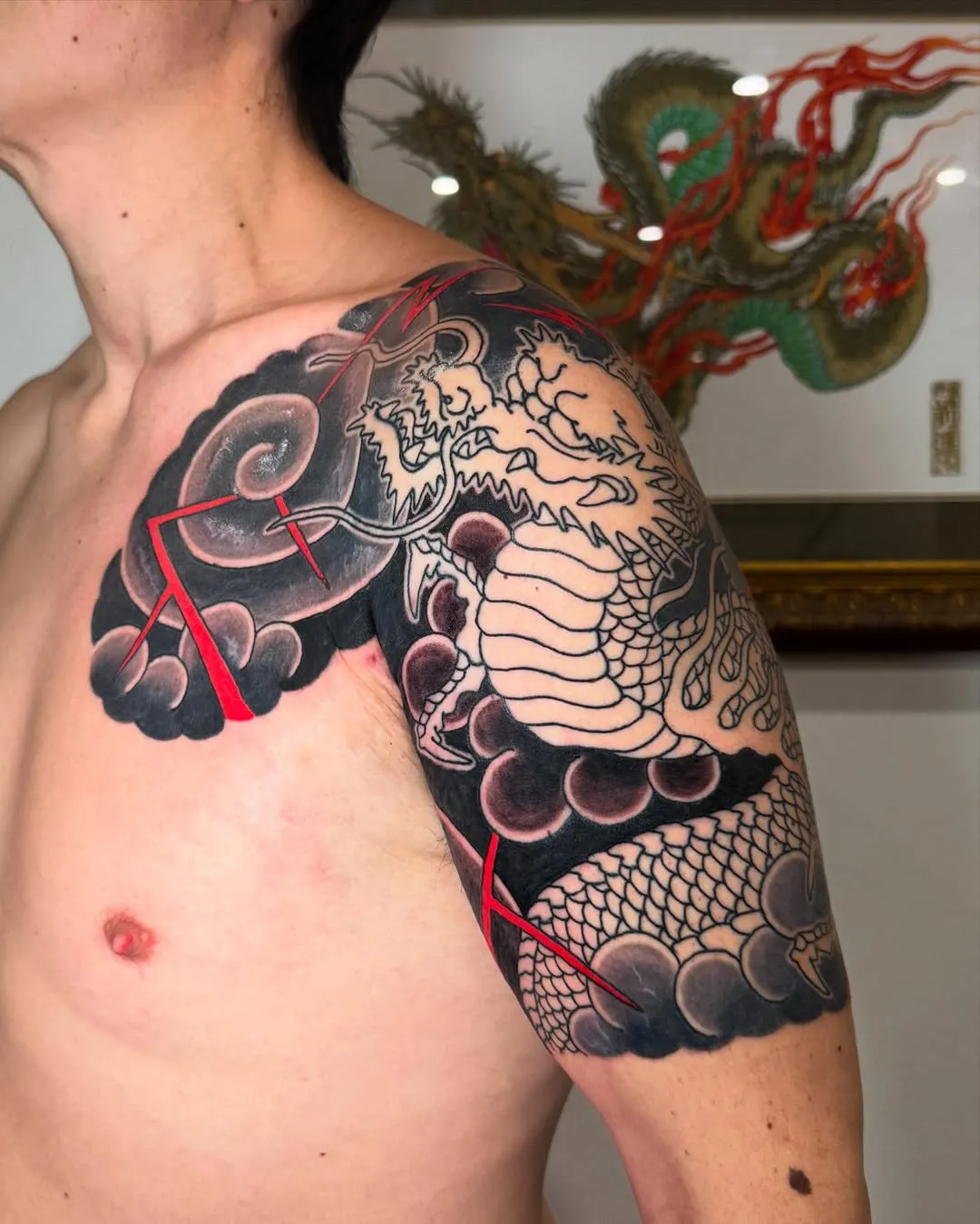
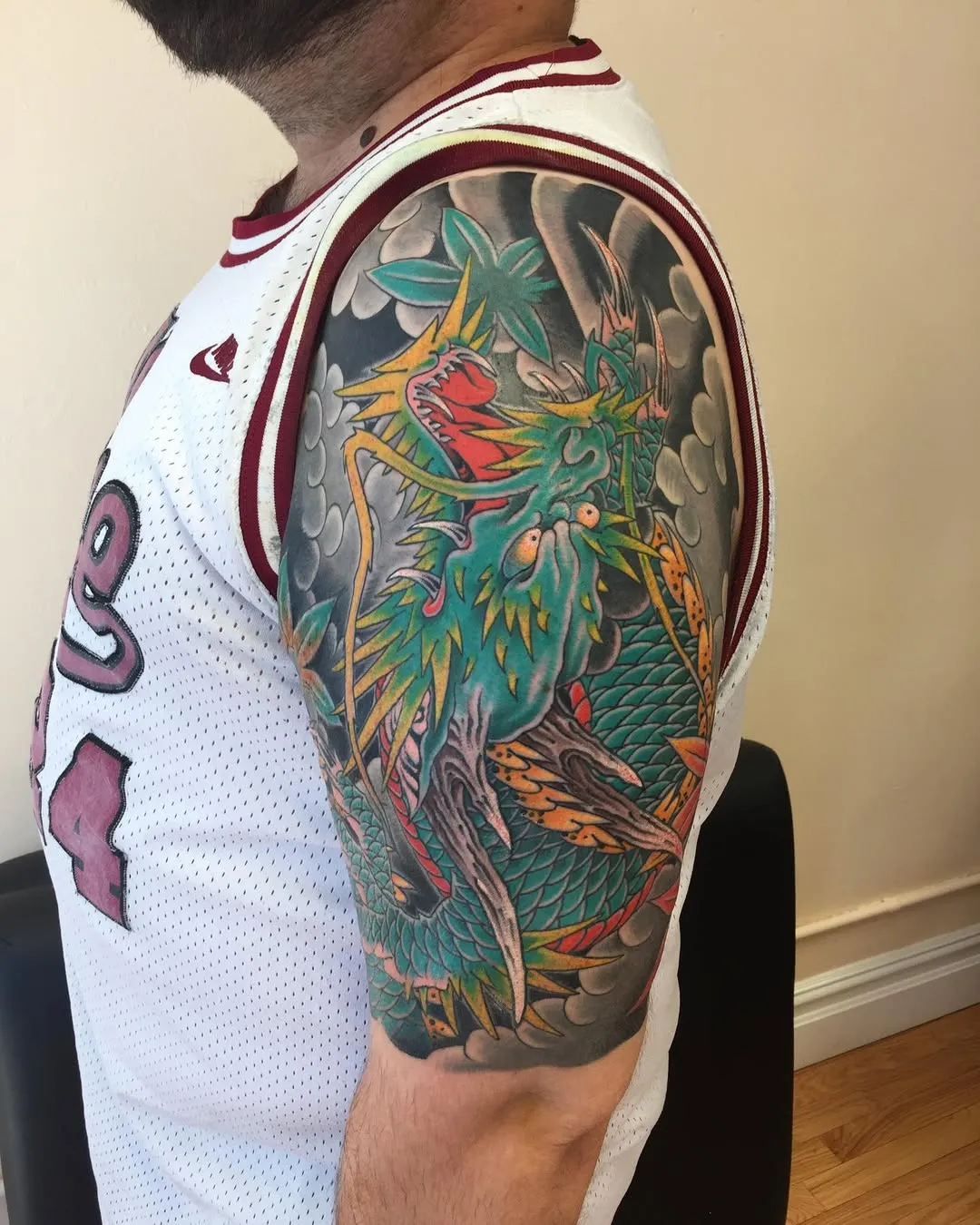
Traditional Japanese Bicep Tattoo Of Samurai Warrior Compositions
Samurai-focused arm tattoos present remarkable opportunities for historical and narrative depth. These designs often depict legendary warriors in full traditional armor, captured in moments of contemplation, battle readiness, or active combat. The complexity of samurai armor with layered plates, decorative cording, and ornate helmets provides artists with opportunities to demonstrate technical mastery while creating visually compelling imagery.
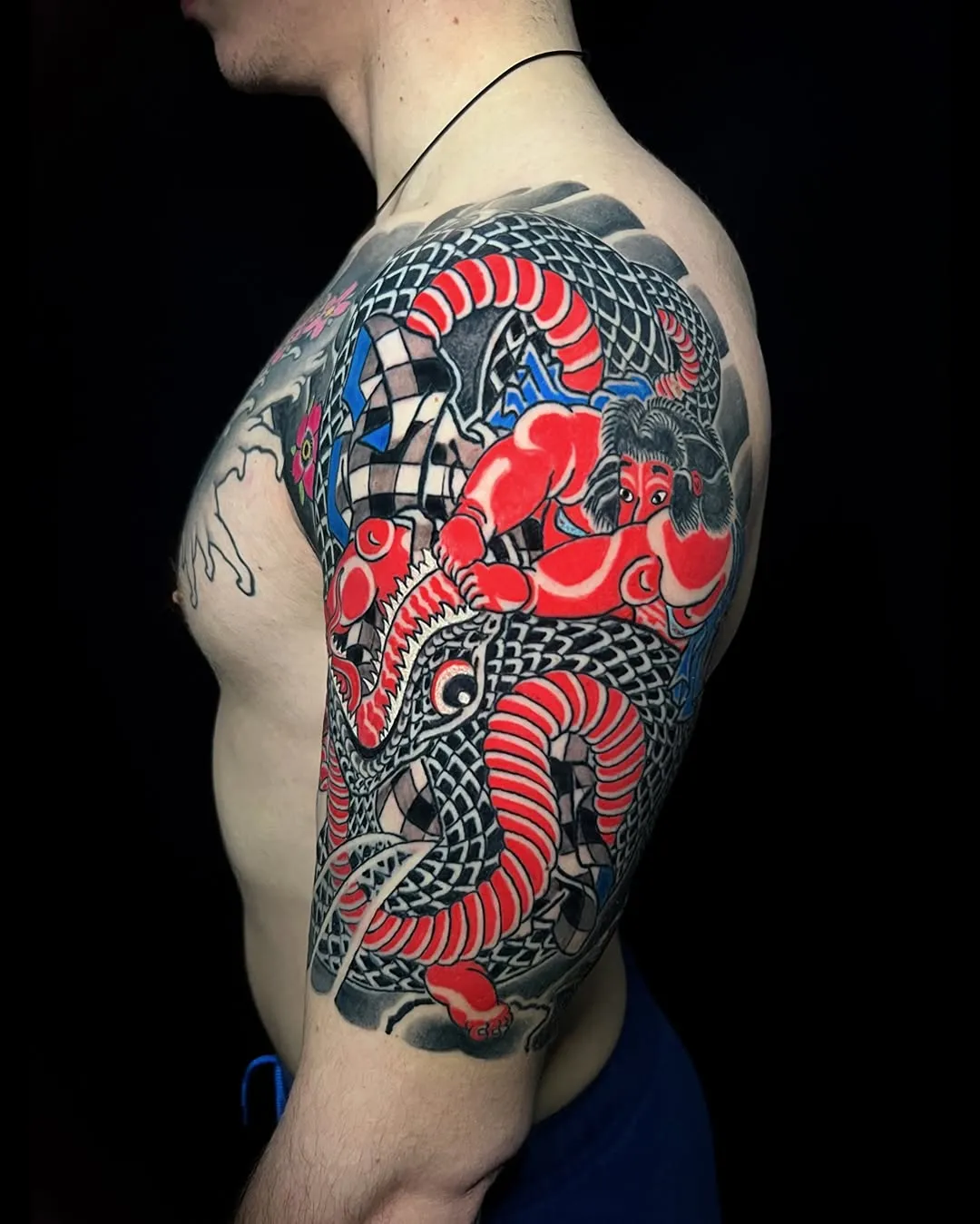
Tiger and Bamboo Scenes
The classic pairing of tigers with bamboo forests creates one of the most visually striking compositions in Japanese tattooing. These designs typically feature a tiger (or pair of tigers) positioned among stylized bamboo stalks, with the vertical lines of bamboo complementing the horizontal striping of tiger fur while providing structural elements that work effectively with arm anatomy.
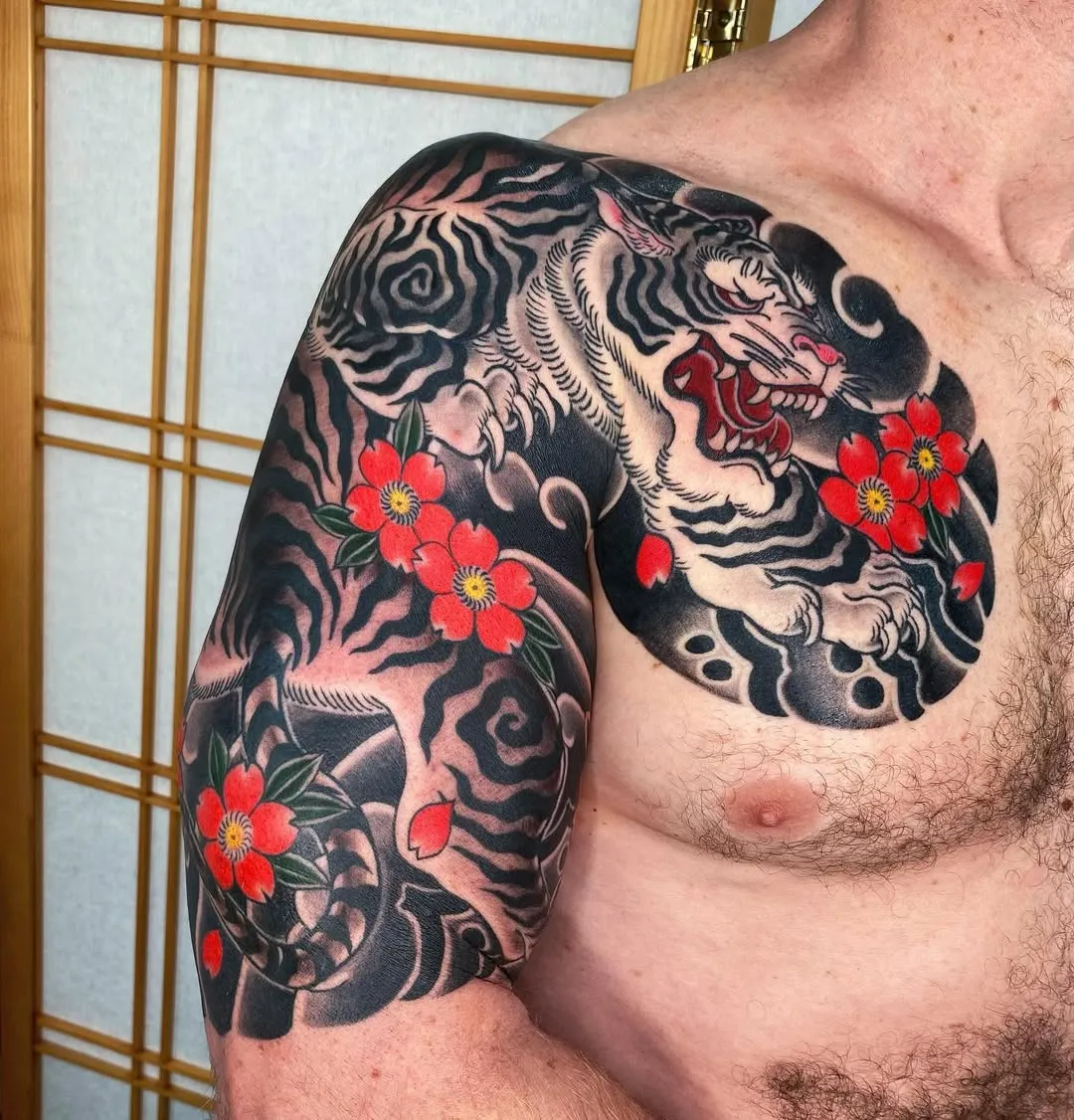
Artists rendering these scenes pay particular attention to the tiger's expression often fierce with bared fangs and intense eyes, contrasted against the serene, elegant bamboo. Background elements might include morning mist suggested through subtle shading, fallen bamboo leaves, or glimpses of rocky terrain. The composition often uses negative space effectively, with areas of untouched or lightly shaded skin allowing the primary subjects to command attention without visual confusion. These designs work exceptionally well as half sleeves, particularly on the upper arm where the larger canvas accommodates the tiger's muscular form.
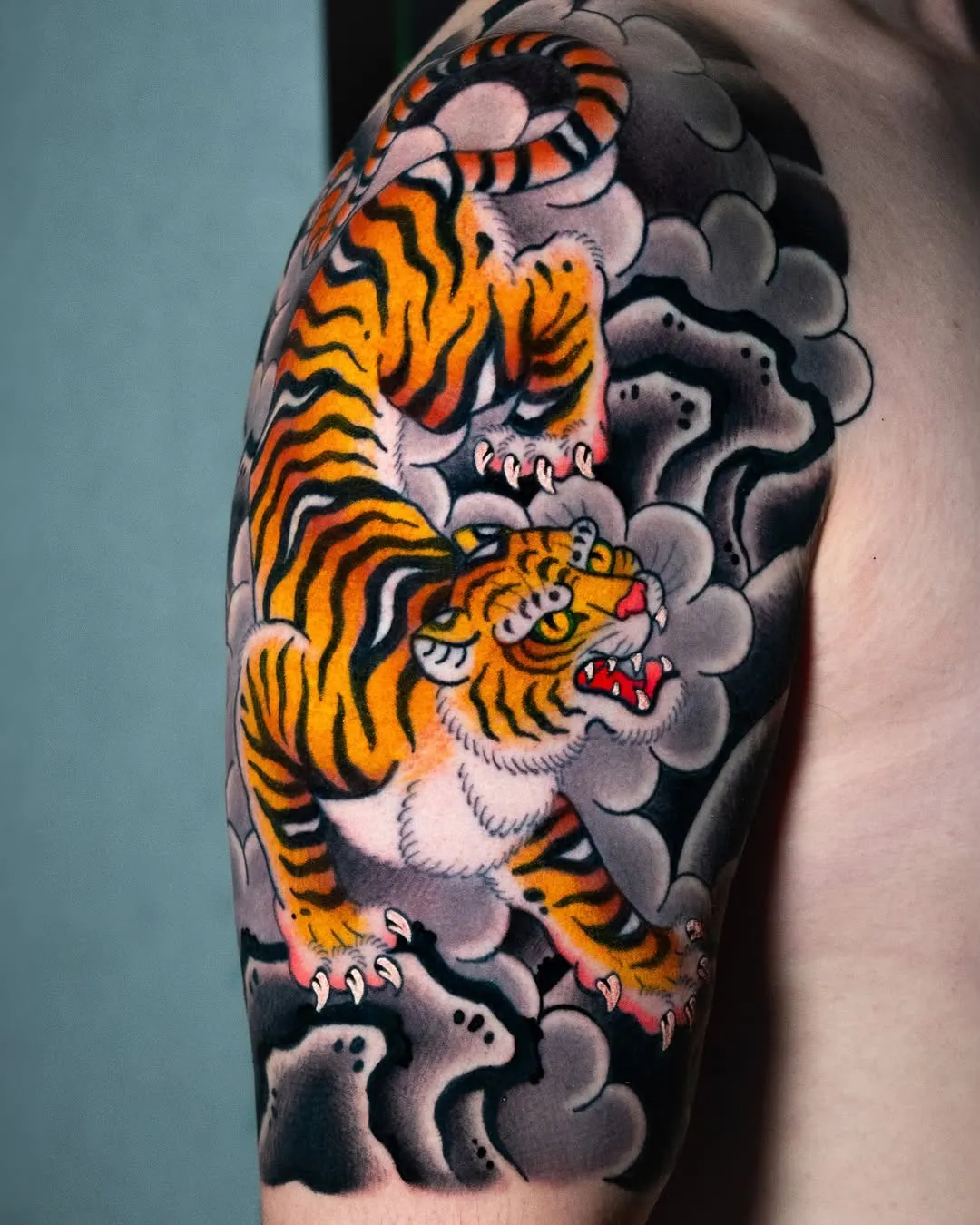
>>>> READ MORE: 8+ Beautiful and Trendy traditional japanese bracelet tattoo Designs
Cherry Blossom and Peony Combinations
For those seeking more delicate aesthetic approaches, compositions emphasizing floral elements offer sophisticated alternatives to animal or warrior subjects. Cherry blossom and peony combinations create visually lush designs that maintain traditional Japanese aesthetic principles while expressing different symbolic values.
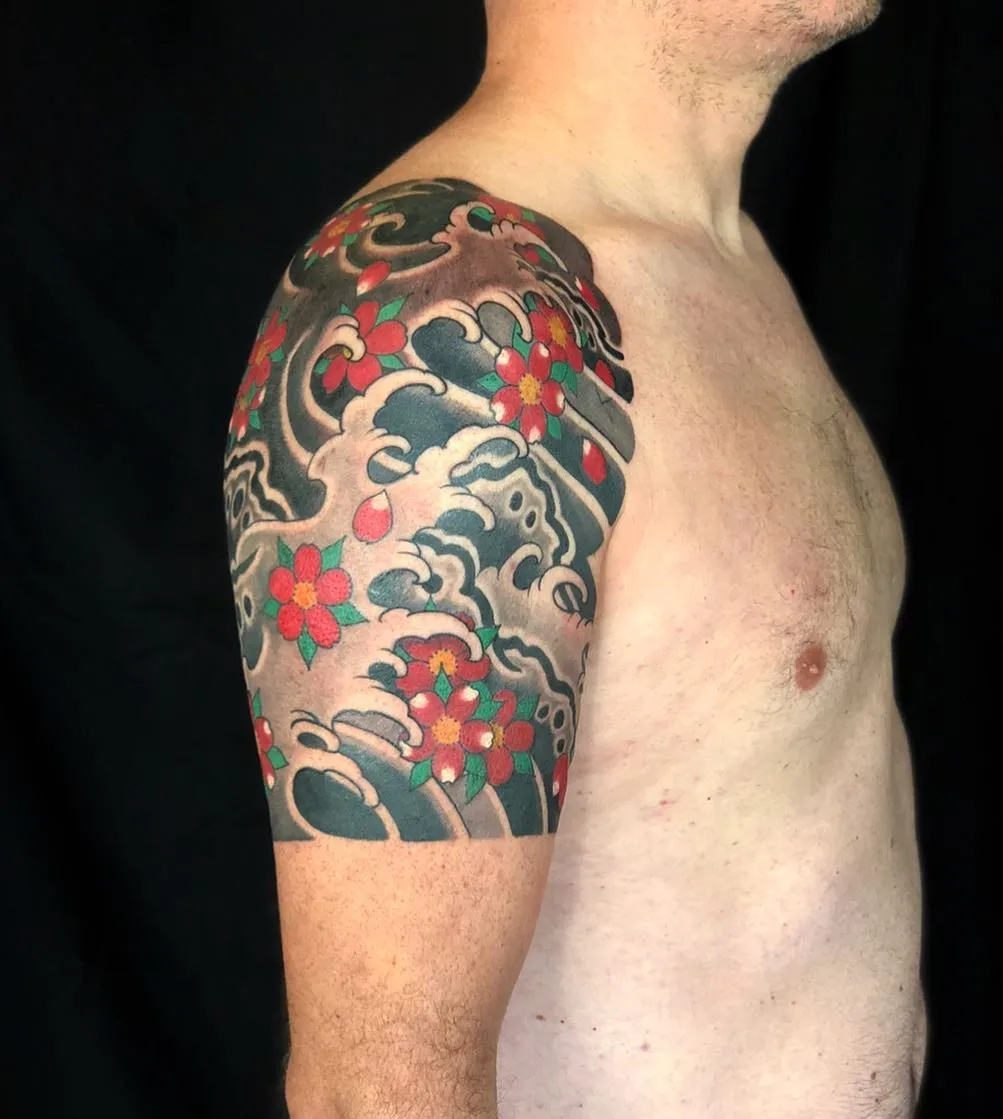

These designs typically feature branches of cherry blossoms interwoven with large, full peony blooms, creating layered compositions with substantial depth. Peonies add their own symbolism to these compositions, representing prosperity, honor, and masculine energy in Japanese culture despite their floral nature. Artists use color masterfully in these designs: pale pink cherry blossoms contrast with deeper red, pink, or purple peonies, all set against backgrounds of soft blue or grey suggesting sky or mist.
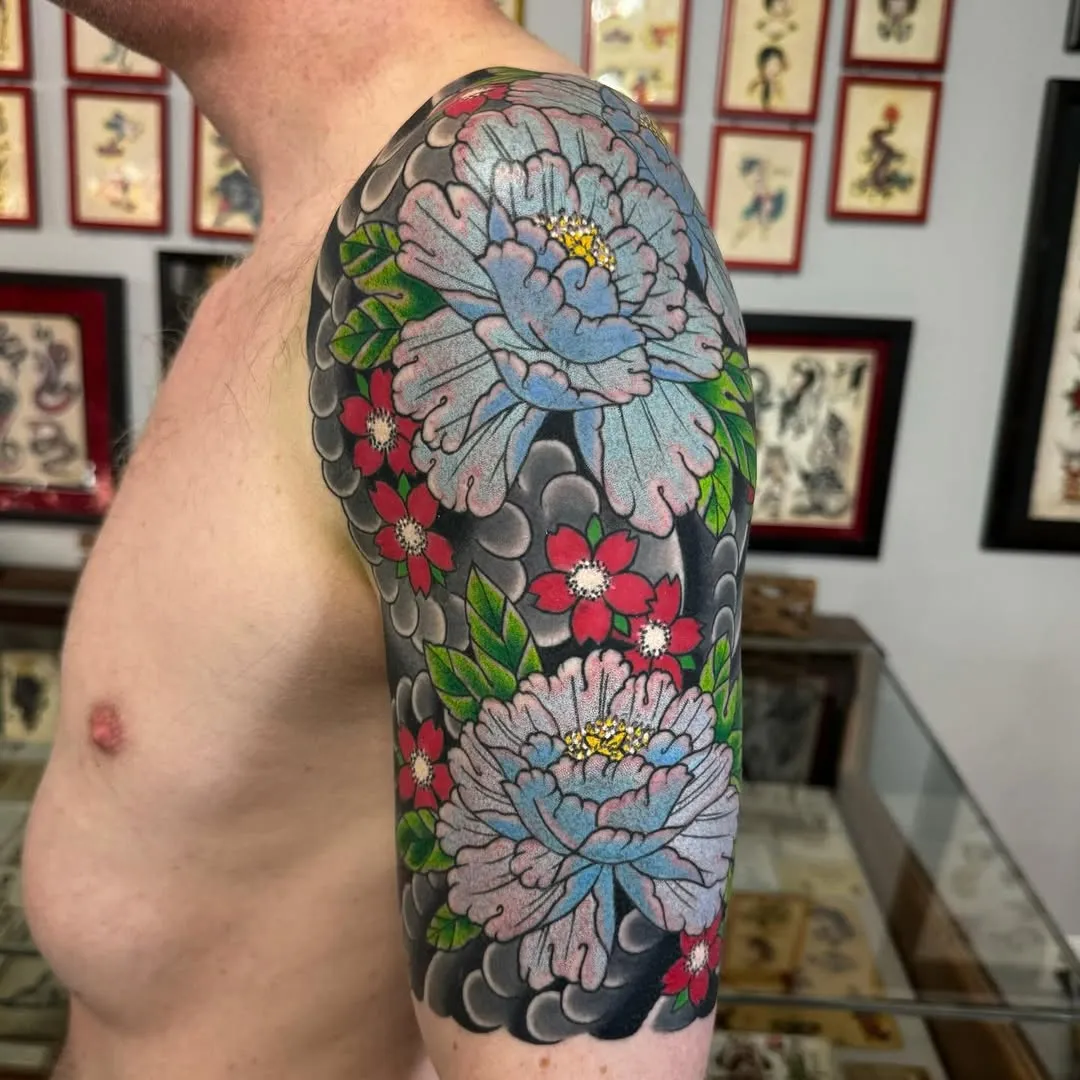
Wave patterns or flowing water often appear as background elements, connecting the floral subjects to the natural world while providing compositional flow. Wind bars might suggest breezes scattering petals, adding dynamism to otherwise gentle subjects. These designs particularly appeal to collectors seeking traditional Japanese tattoo aesthetics without the aggressive imagery of dragons or tigers, creating pieces that convey refinement and appreciation for natural beauty.
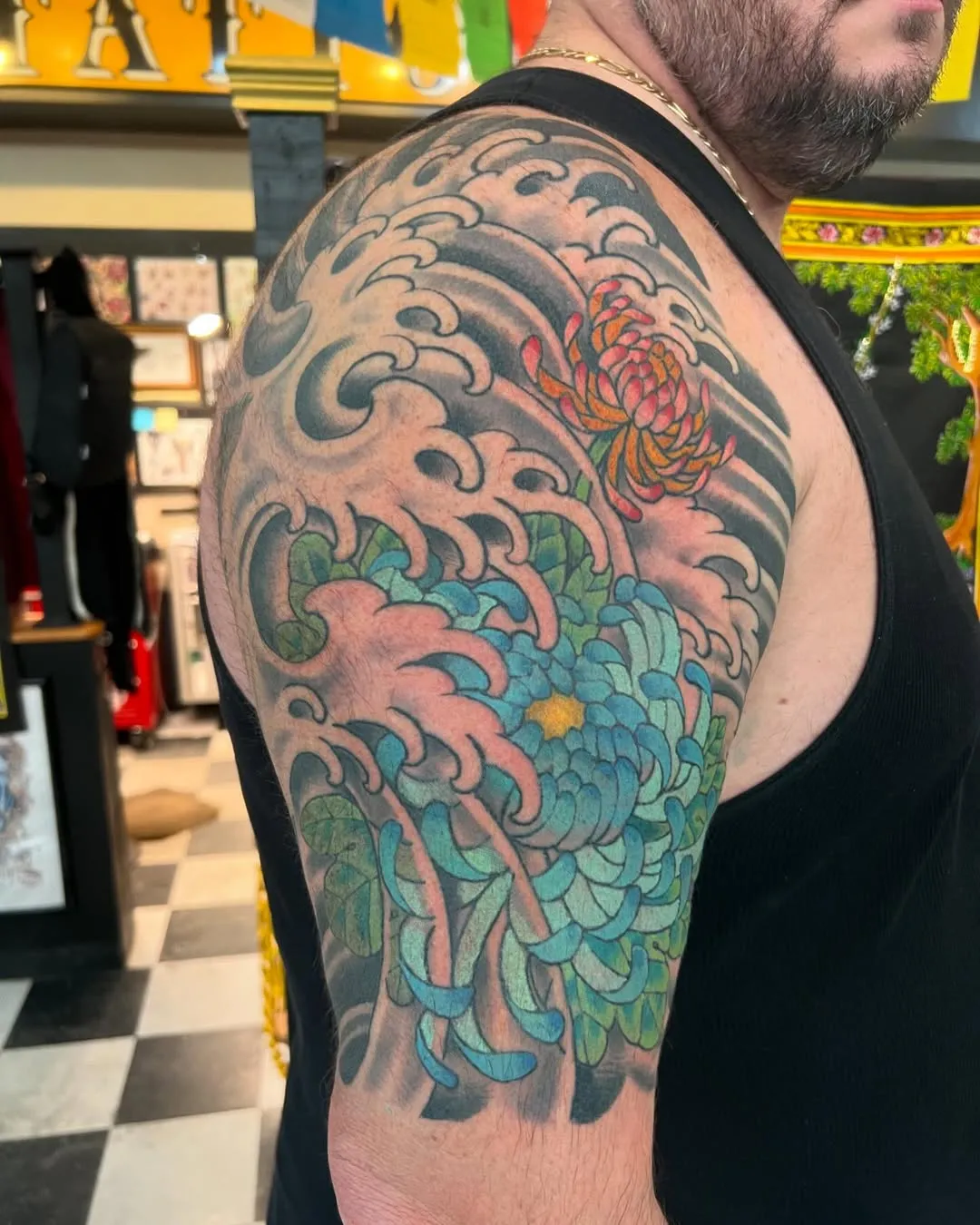
Koi Fish and Water Elements
Koi carp swimming upstream against powerful currents represent some of the most symbolically rich and visually dynamic traditional Japanese arm designs. These compositions draw on the Chinese legend of koi transforming into dragons after successfully swimming up a waterfall, making them powerful symbols of perseverance, transformation, and achievement against adversity.
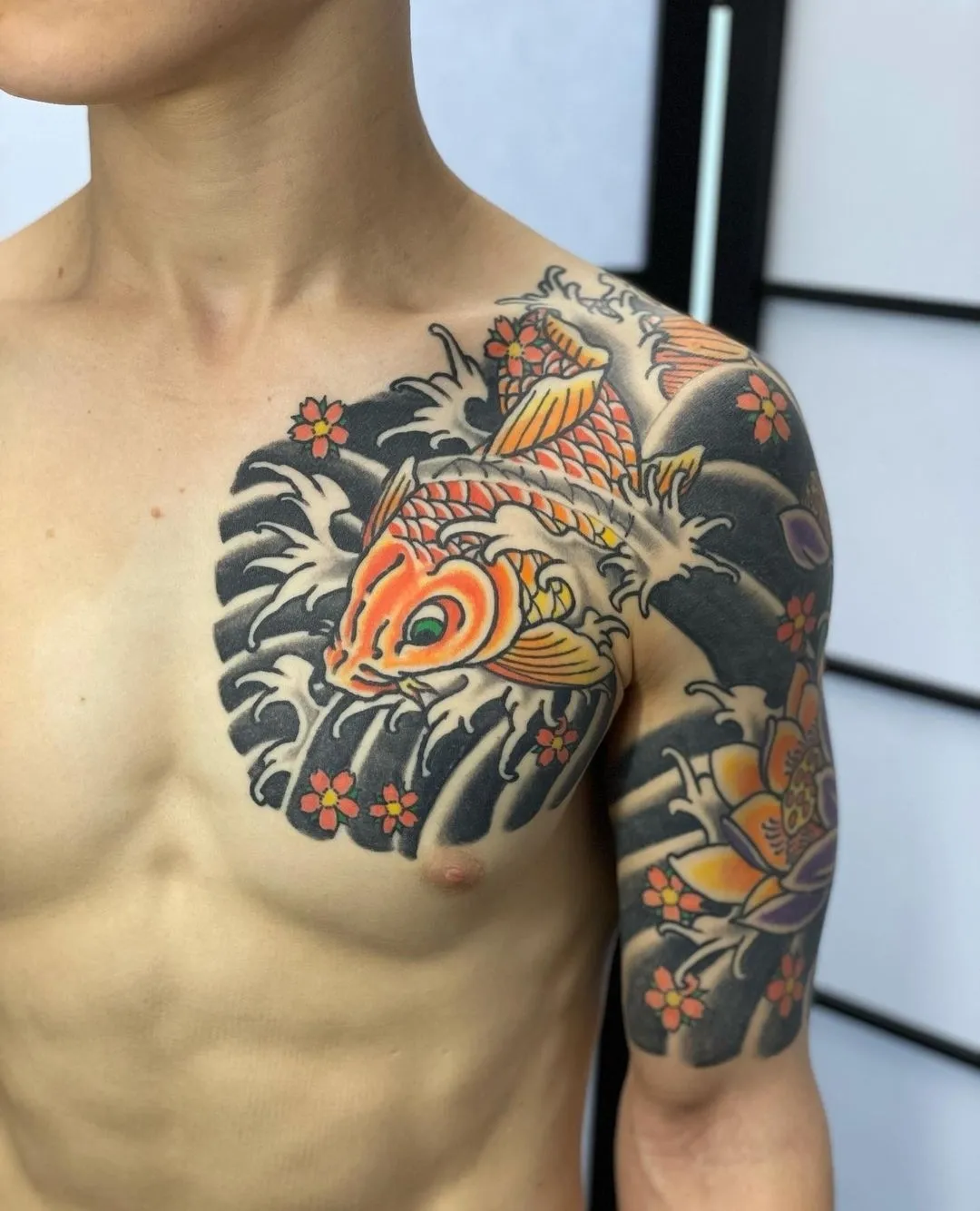
Effective koi designs emphasize the fish's muscular body and distinctive scale patterns, rendered in vibrant orange, red, white, black, or yellow - sometimes combining multiple koi in varied colors. The fish typically angle upward, appearing to swim against water currents depicted through swirling patterns and stylized waves. The dynamic interaction between koi struggling upward and water forcing them downward creates visual tension that keeps compositions engaging.
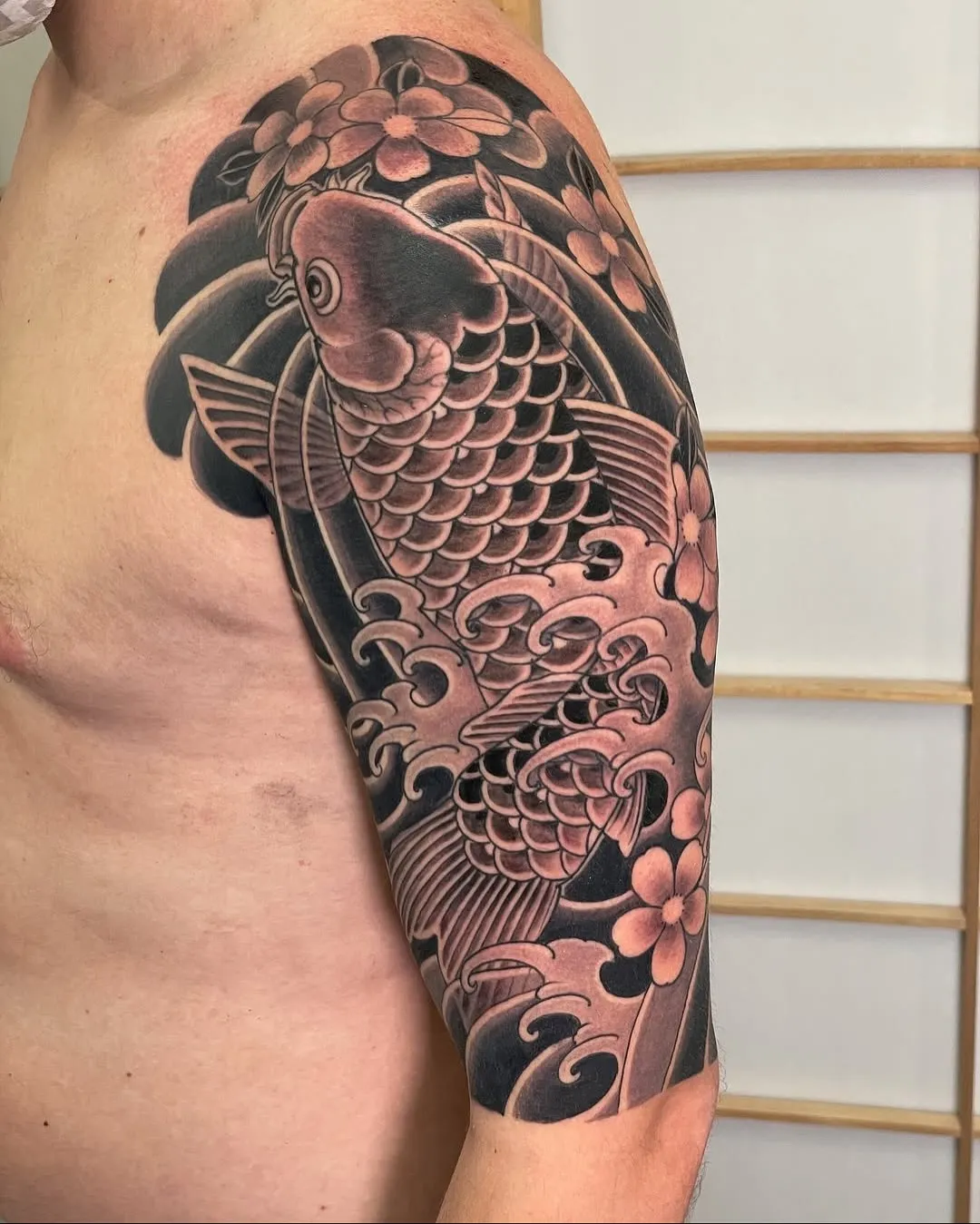
Background elements often include lotus flowers (symbolizing purity rising from muddy water), maple leaves (representing autumn and the passage of time), or rocks and pebbles suggesting riverbeds. The contrast between the koi's smooth, flowing body and the turbulent water creates natural opportunities for artists to demonstrate technical skill in rendering both gentle curves and angular, energetic water patterns.
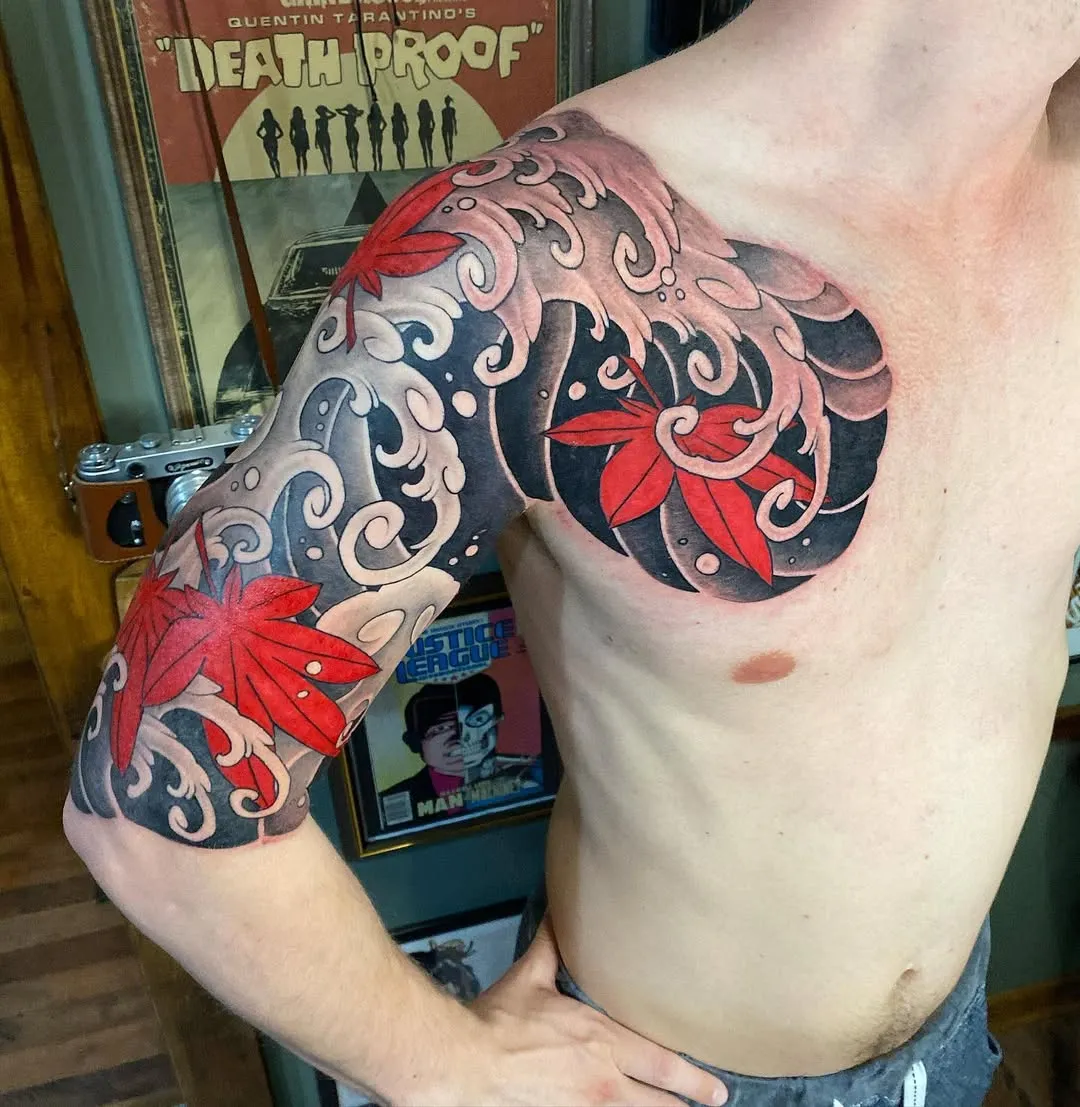
>>>> TRY MORE: Top 12+ Best traditional japanese hand tattoo Ideas And Meaning
Traditional Japanese Bicep Tattoo Of Phoenix Rising Designs
The phoenix offers another powerful subject for Traditional Japanese Bicep Tattoo, particularly appealing to those who identify with themes of rebirth, renewal, and transformation. Unlike dragons or tigers, phoenixes carry distinctly optimistic symbolism, representing triumph over adversity and the ability to emerge stronger from difficulties.
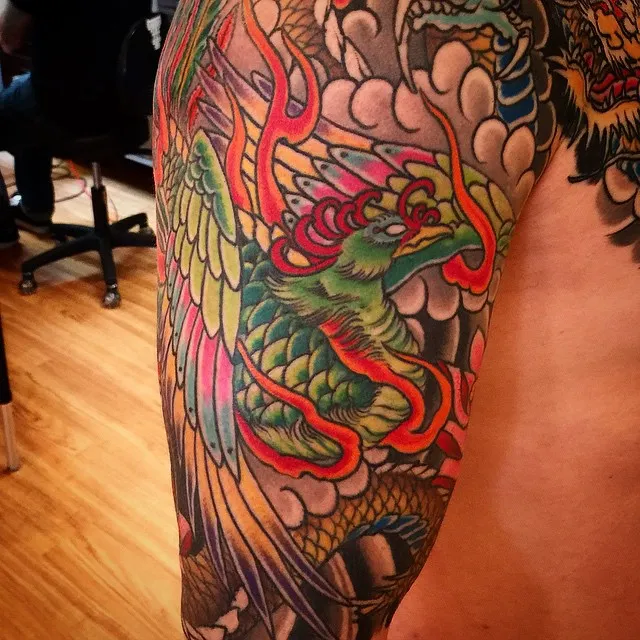
Phoenix compositions showcase the bird's elaborate plumage: long, flowing tail feathers and wing patterns incorporating vibrant reds, oranges, golds, and occasionally blues or greens suggesting peacock influence. The bird typically appears either in ascending flight, suggesting active transformation, or perched among flowering branches, suggesting achieved wisdom and peaceful strength. Flames frequently accompany phoenixes, referencing their mythological connection to fire and rebirth.
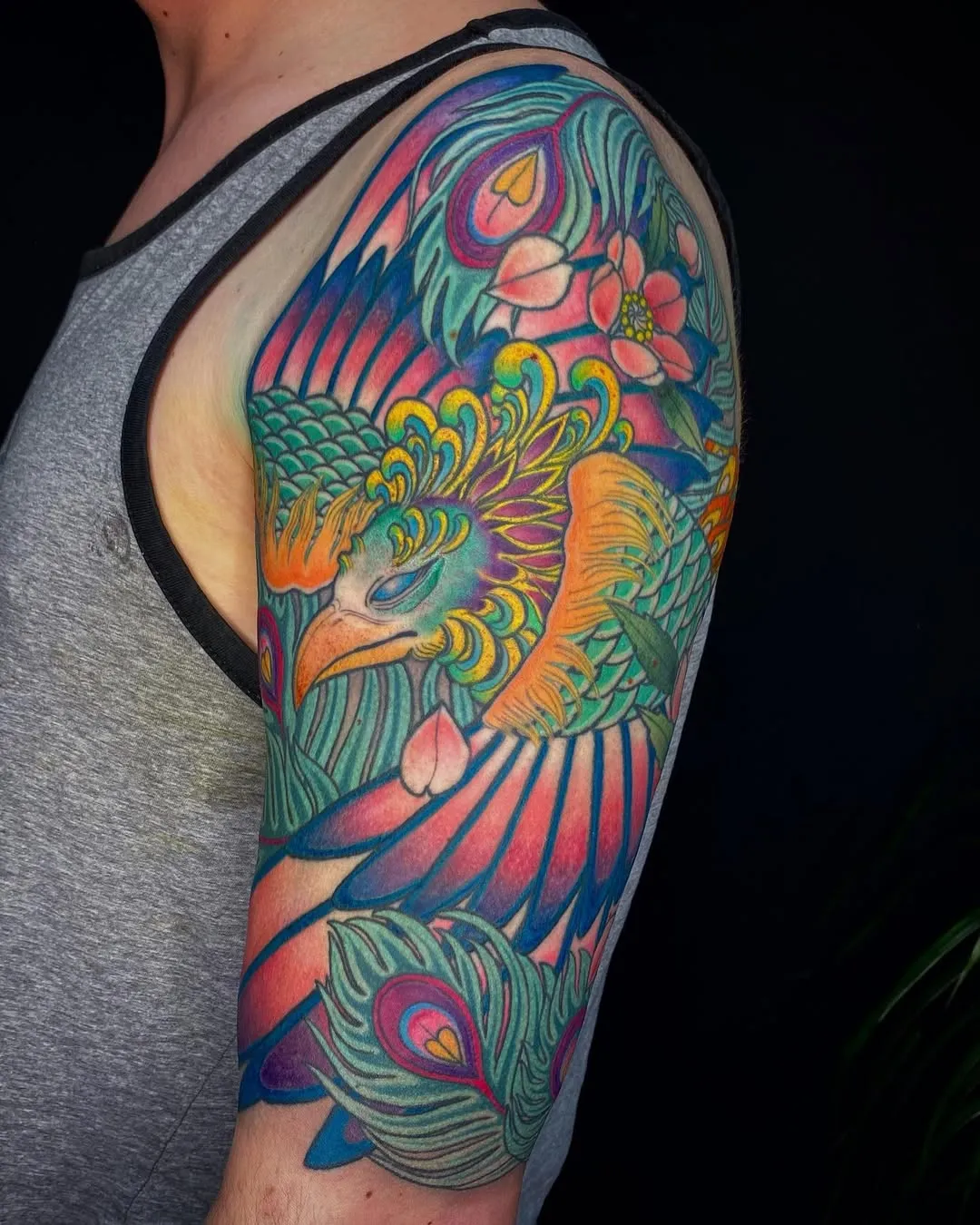
These designs work particularly effectively as full or half sleeves, with wing and tail feathers following natural arm contours while allowing for intricate detail work in individual feathers. Cloud backgrounds position the phoenix in celestial realms, while incorporation of sun imagery or divine light rays emphasizes the bird's association with solar symbolism and enlightenment.
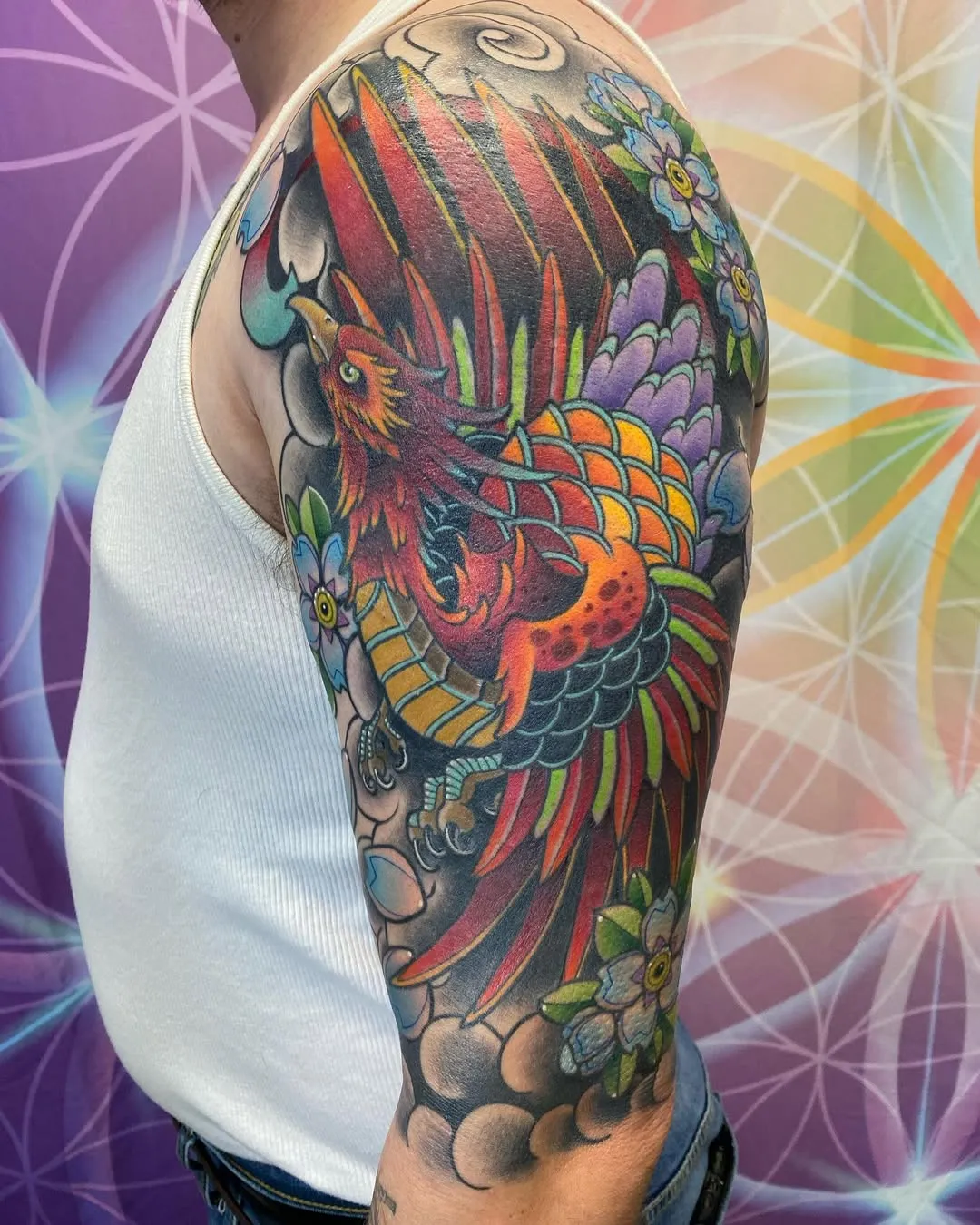
Traditional Japanese Bicep Tattoo Of Hannya Mask Features
For those drawn to more dramatic and psychologically complex imagery, Hannya masks present fascinating subject matter rooted in Japanese Noh theater. These stylized female demon masks represent jealousy and rage transformed into supernatural vengeance - complex emotions that create compelling visual narratives. Hannya designs prominently feature the mask's distinctive characteristics: sharp horns, metallic eyes, fang-like teeth, and an expression mixing fury with profound sadness.
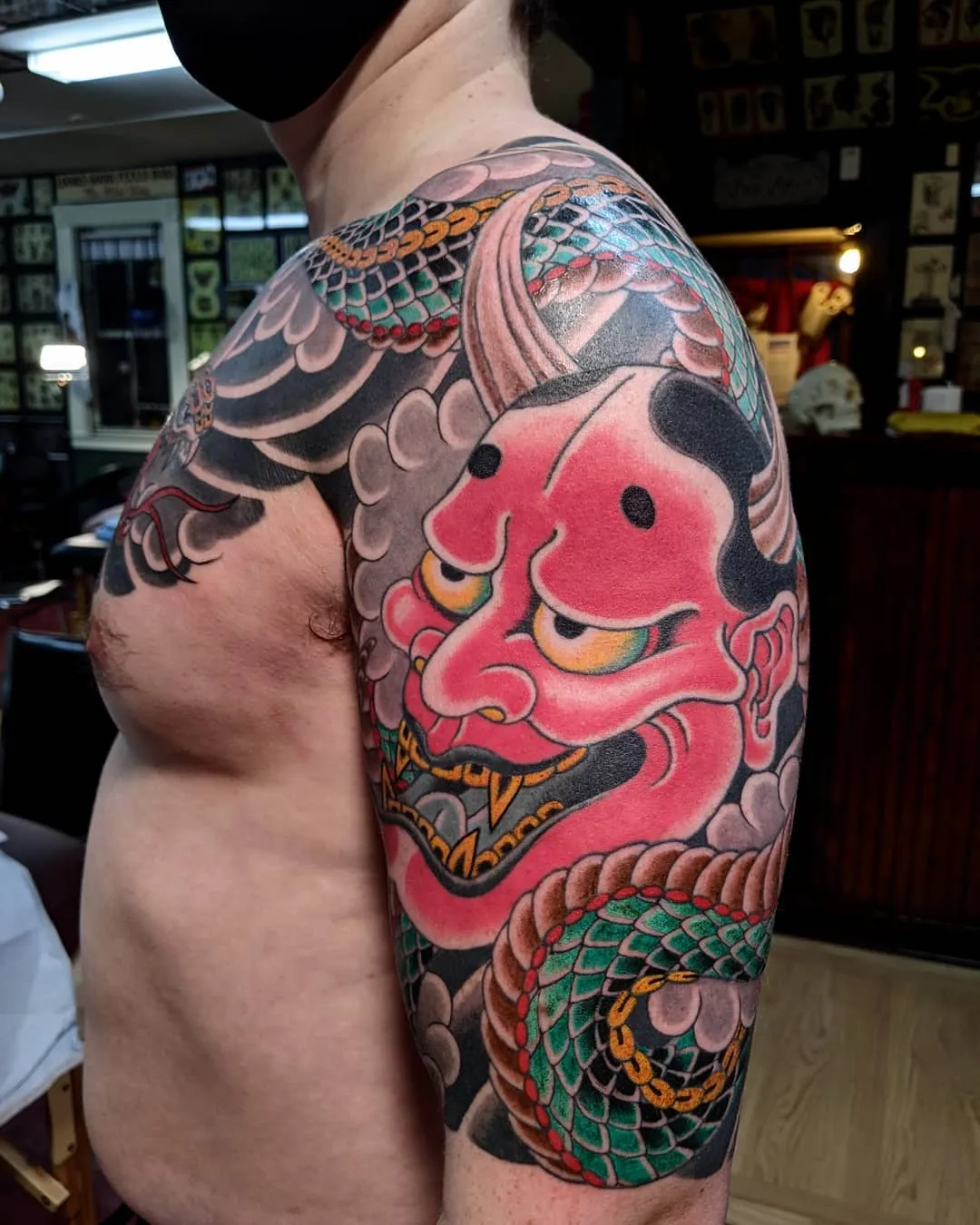
>>>> SEE MORE: 20+ Best full back traditional japanese tattoo Ideas for Men and Women
Special Considerations for Traditional Japanese Bicep Tattoo
The upper arm is an ideal placement for traditional Japanese tattoos (Irezumi) due to its moderate size and ability to showcase strength. However, to achieve a perfect piece, you need to consider the following special points:
- The design must "hug" and "flow" with the contours of the upper arm, making the tattoo look natural and dynamic when you move. This prevents it from appearing distorted or broken when viewed from different angles.
- The upper arm area is not as large as the back, so it is crucial to focus on a single main subject (e.g., Koi fish, dragon, Hannya mask...). This subject is typically placed on the outer arm, where it is most prominent and visible.
- The background in Irezumi (such as clouds, water, or waves) serves to connect and emphasize the main subject. On the upper arm, the background must be skillfully designed to fill the gaps and create a seamless look when viewed from all around the arm.
- The inner upper arm has thinner, more sensitive skin and more nerve endings, meaning it will often be significantly more painful than the outer arm. Be mentally prepared for the process.
>>>> READ MORE: Top 7 half back japanese tattoo Ideas: Bold Art, Timeless Style
H2M Tattoo Studio - Best Place for Traditional Japanese Bicep Tattoo
Choosing the right tattoo studio is the key to owning a meaningful and lasting work of art. Therefore, the performing unit needs to ensure both skills, dedication and a safe, professional process, bringing absolute peace of mind to customers.
If you want to find an address with high technical skills in traditional Japanese tattoo on the arm, H2M Tattoo Studio is a choice worth considering. The unit owns many artists with specialized skills and deep understanding of ancient Japanese tattoo art:
- The artists here not only possess strong technical skills but also profound knowledge of Japanese culture and symbolism. They know how to blend classical artistry with modern aesthetics, creating tattoos that are not only visually striking but also carry personal stories.
- The entire process at H2M Tattoo Studio is handled with professionalism - from design consultation and selecting the right motif for your arm shape to hygiene practices and post-tattoo care. Every client is listened to and accompanied throughout their journey.
This meticulous attention to detail, artistic sensitivity, and respect for tradition have made H2M Tattoo Studio a trusted choice for anyone seeking an authentic and meaningful Traditional Japanese Bicep Tattoo.
A Traditional Japanese Bicep Tattoo represents more than just body art, it embodies personal expression, strength, and deep cultural symbolism. Blending tradition with modern aesthetics, this tattoo style continues to captivate with its depth of meaning and refined beauty. We hope this article from H2M Tattoo Studio has provided you with useful insights and inspiration to choose the right design for yourself.
>>>> NOTE NOW:


